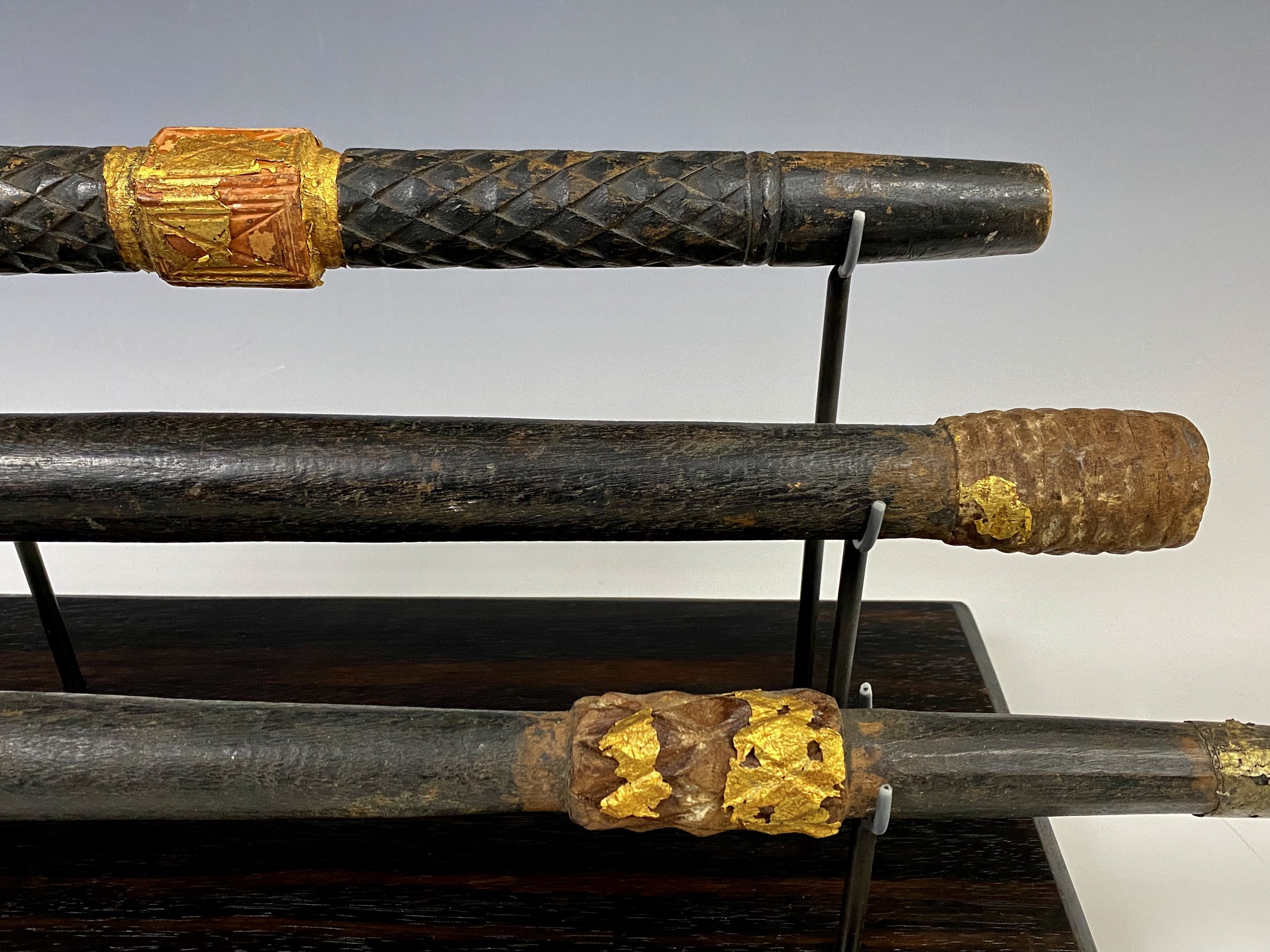
Magnificent gold-covered staffs (and occasionally silver covered) are carried by high-ranking officials within the courts of Akan chiefs in an area of West Africa once known as the Gold Coast. Because they are a society that originally had no written tradition, the Akan peoples place an enormous emphasis on speech. The spoken word, in the form of axioms and stories, is the repository of Akan custom and values, and a complete mastery of proverbial lore, combined with an eloquent and insightful way of conveying it, is considered the mark of intellect of highly esteemed individuals. Those who possess this knowledge and an articulate command of language may be appointed as court linguists, the most important nonroyal court officials. -D.Ross.


An Asante (Okyeame Poma) linguist staff finial. Wood, hammered gold foil and gold staples. The hammered gold sheet has been attached to the carved wood with gold staples. 9 1/2" x 4 1/2" x 3 1/2", c. 19th- 20th century (1890s-1920s). “The food is for the man who owns it and not for the man who is hungry.” Food here is a metaphor for chieftaincy, which is for the rightful heir and not for one who just hungers for power.” ex Allan Stone, NYC

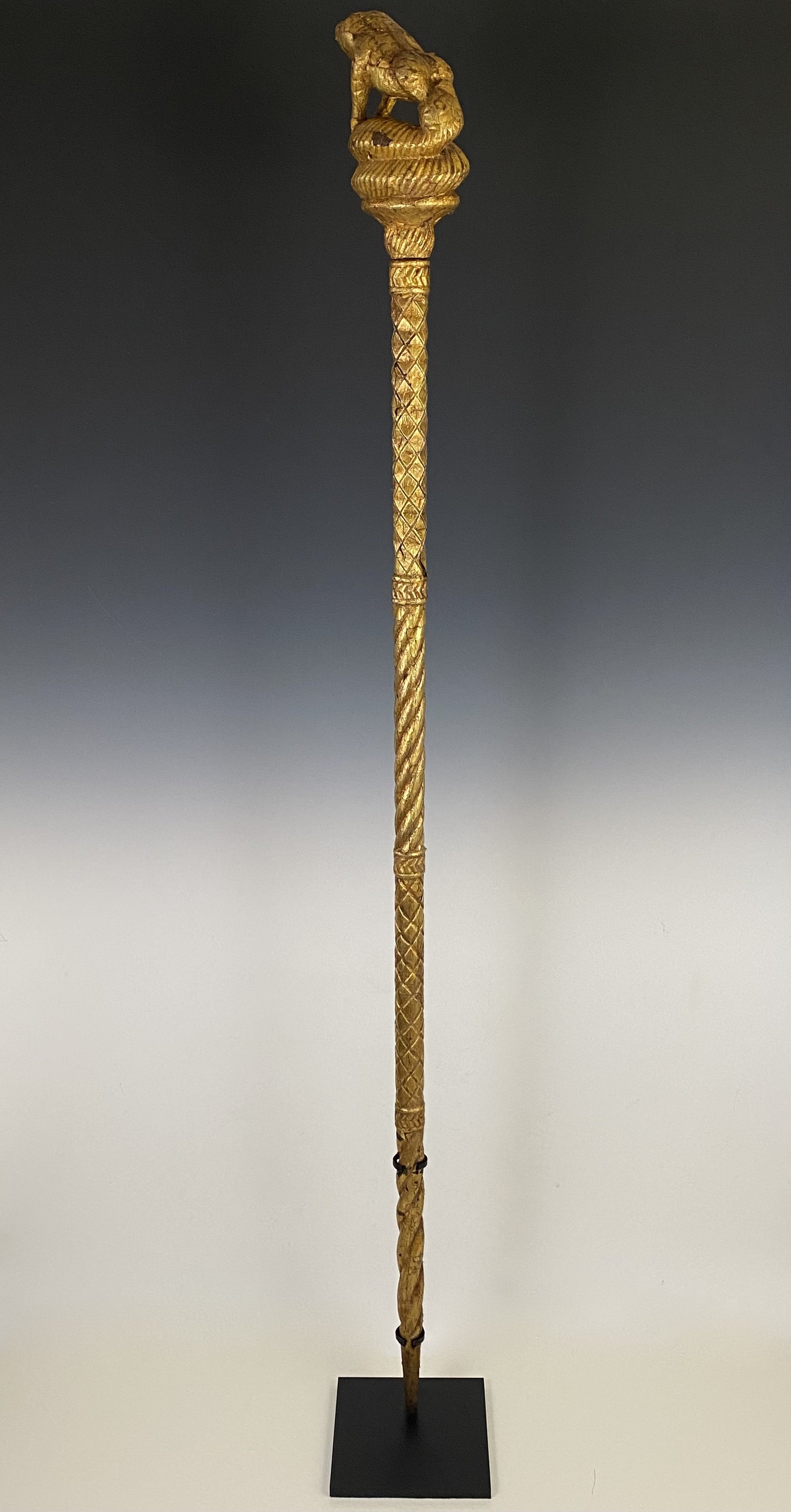
“Okyeame poma” (linguist/orator’s staff). Wood, gold foil. Ghana. 59 inches H. “Magnificent gold-covered staffs like this one are carried by high-ranking officials within the courts of Akan chiefs in an area of West Africa once known as the Gold Coast. Because they are a society that originally had no written tradition, the Akan peoples place an enormous emphasis on speech. The spoken word, in the form of axioms and stories, is the repository of Akan custom and values, and a complete mastery of proverbial lore, combined with an eloquent and insightful way of conveying it, is considered the mark of intellect of highly esteemed individuals. Those who possess this knowledge and an articulate command of language may be appointed as court linguists, the most important nonroyal court officials.” - metmuseum. The image is of a snake devouring a frog. “It’s a common theme in Asante art and often represents the proverb: "Every part of the frog belongs to the snake." This is based on the observation that snakes swallow their prey whole, and the proverb is used to describe dominant subservient relationships.”-D.Ross The snake triumphs through patience and what is good for the frog is ultimately good for the snake or what is good for the chief’s subjects, is good for the chief. EX estate of Dr. David Y Solomon, of NYC


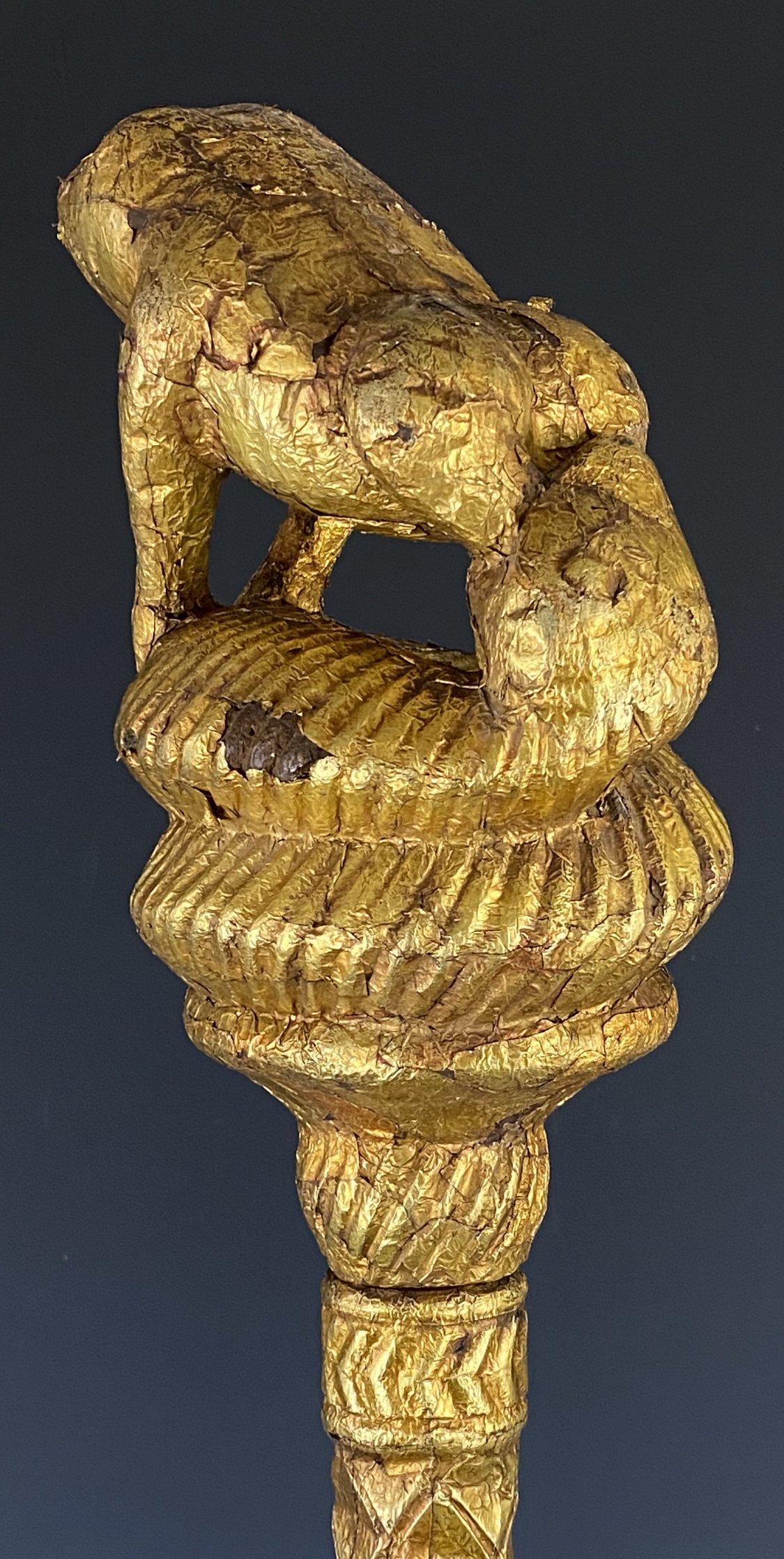
Another coiled snake in the collection is on an Asante linguist staff finial. This time the snake is devouring a frog. “It’s a common theme in Asante art and often represents the proverb: "Every part of the frog belongs to the snake." This is based on the observation that snakes swallow their prey whole, and the proverb is used to describe dominant subservient relationships.”-D.Ross The snake triumphs through patience and what is good for the frog is ultimately good for the snake or what is good for the chief’s subjects, is good for the chief.

An Asante linguist staff finial (okyeame poma) portraying two Asante warriors: one with a gun, standing on a powder keg and the other with an akrafena sword standing on the severed head of a fallen enemy. This could commemorate a localized battle or refer to a historic event in the Asante kingdom. More research and interpretation is needed. It’s still one of my favorite works in the collection. Wood, hammered gold foil, gold staples. 25.5cm H From the estate René David (1928-2015), Zurich. Exhibited: Musée International du Golfe de Guinée, Togo (2005-2011)



Asante linguist staff finial (ɔkyeame poma). Ghana, early 20th century. Carved wood, hammered gold foil. 15.5 h × 6.5 w × 6 d in (39 × 17 × 15 cm). A number of ɔkyeame poma represent messages of cooperative behavior within the state and between the chief and his subjects. For example two men helping each other with climbing a tree or working may represent a saying “If your intentions are good people will help.” Cooperation leads to success.
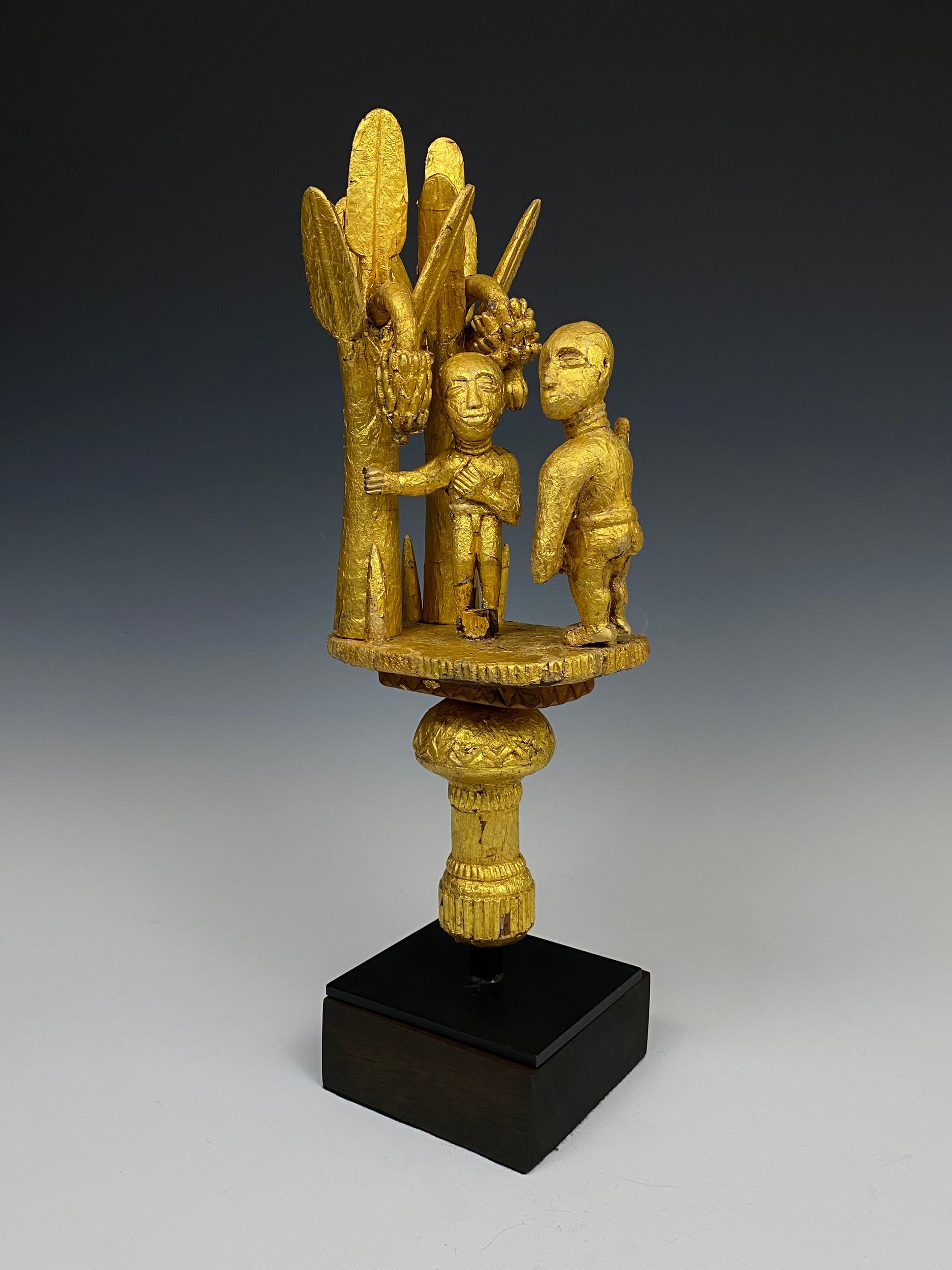

An Ashanti linguist staff finial (okyeame poma). Ghana. The finial depicts a tree with one figure helping another to climb it. Ht. 16 in. It depicts the saying, "If you climb a good tree, you get a push," or if your intentions are good, people will help you." Ex Bonhams, Mass.; Ex Private collection, Baltimore, Maryland; Ex William Wright Gallery, New York City, 1994; Dr. May Weber collection, Chicago, Illinois



The image is the “bird that flies with cannons.” An exquisitely carved Asante “Okyeame poma” (linguist/counselor’s staff). Wood, hammered silver foil. Ghana. 62.5 inches H. Magnificent gold-covered staffs (or in this case silver covered) are carried by high-ranking officials within the courts of Akan chiefs in an area of West Africa once known as the Gold Coast. Because they are a society that originally had no written tradition, the Akan peoples place an enormous emphasis on speech. The spoken word, in the form of axioms and stories, is the repository of Akan custom and values, and a complete mastery of proverbial lore, combined with an eloquent and insightful way of conveying it, is considered the mark of intellect of highly esteemed individuals. Those who possess this knowledge and an articulate command of language may be appointed as court linguists, the most important nonroyal court officials. The expression associated with the image is primarily descriptive, "The bird that flies with cannons and gun- powder." Nevertheless, it is an evocative metaphor for the martial capabilities of chief and state.” -D.Ross. ex Collection of Michael von Schenck (1931), Basel. 1980-1983 Swiss Ambassador in Ghana




An Asante linguist/ counselor’s staff topped with a finial of an elephant stepping on a trap. Wood, covered with gold foil, Ghana. 43.5” H. The staff is too short to be complete and is most likely missing the middle section as evident in the miss matched pattern in the center transitional joint. Staffs are commonly much taller. The tusks are broken and at one point we’re much longer. Doran Ross writes “Issues of succession aside, many images in Akan regalia emphatically proclaim the power of the chief, both physically and intellectually. The staff with the chain link shaft has a finial of an elephant standing on an animal trap. Its maxim is generally translated as, "When the elephant steps on trap, it does not spring." Kojo Bonsu, with a slightly different twist on the meaning, said in English, "When elephant steps on trap, no more trap!" Also seen on the staff is the chain link. Ross explains it as “The solidity of the family and the integrity of succession are often referenced in carvings and castings of linked chains. Peggy Appiah in a 1977 communication cites the following: "If we are linked together like a chain, in life we are linked, in death we are linked. Family links are never broken." This graphically emphasizes the strength of family bonds.” Ex collection of Dr. & Mrs. John Finley.
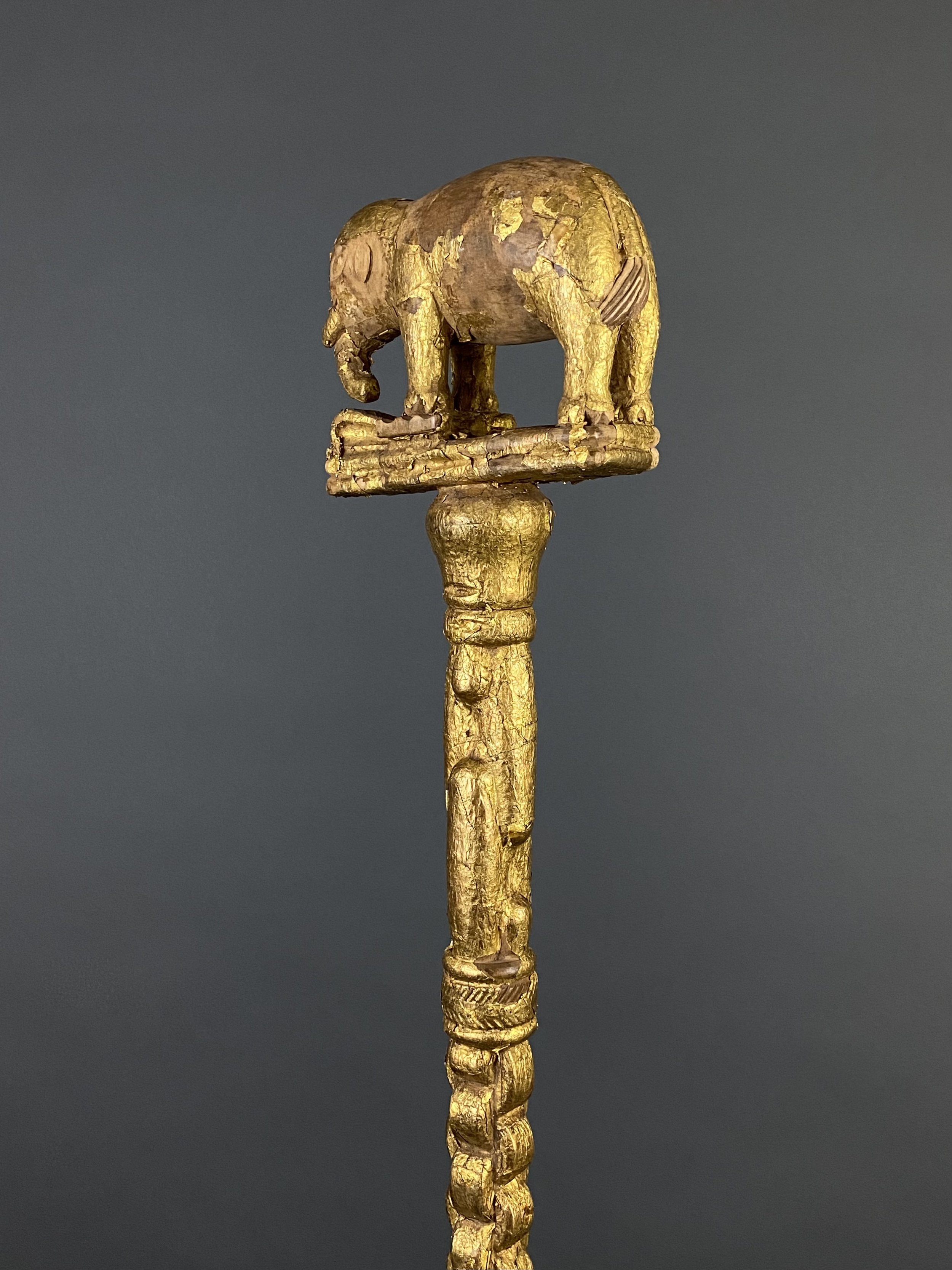
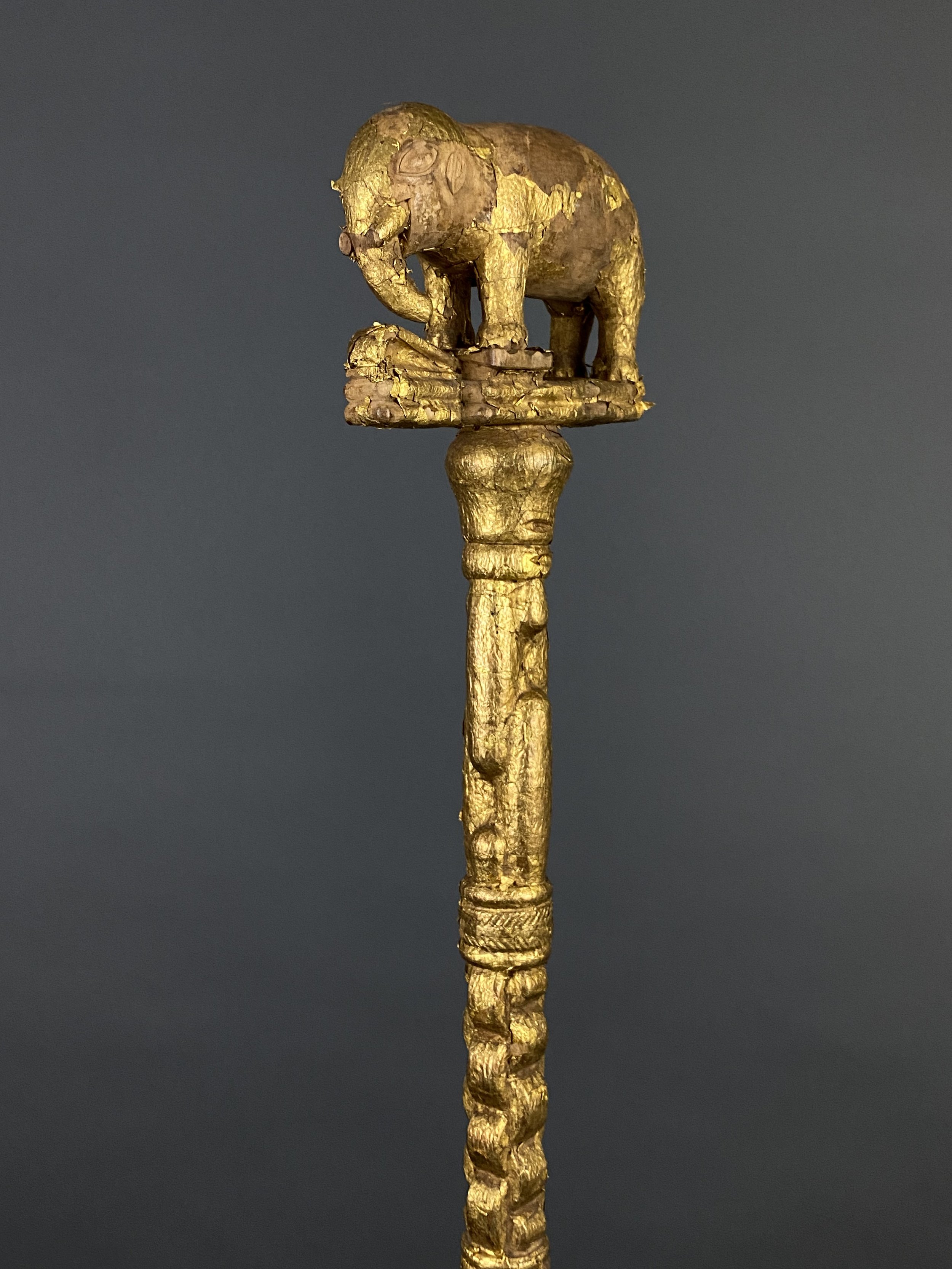

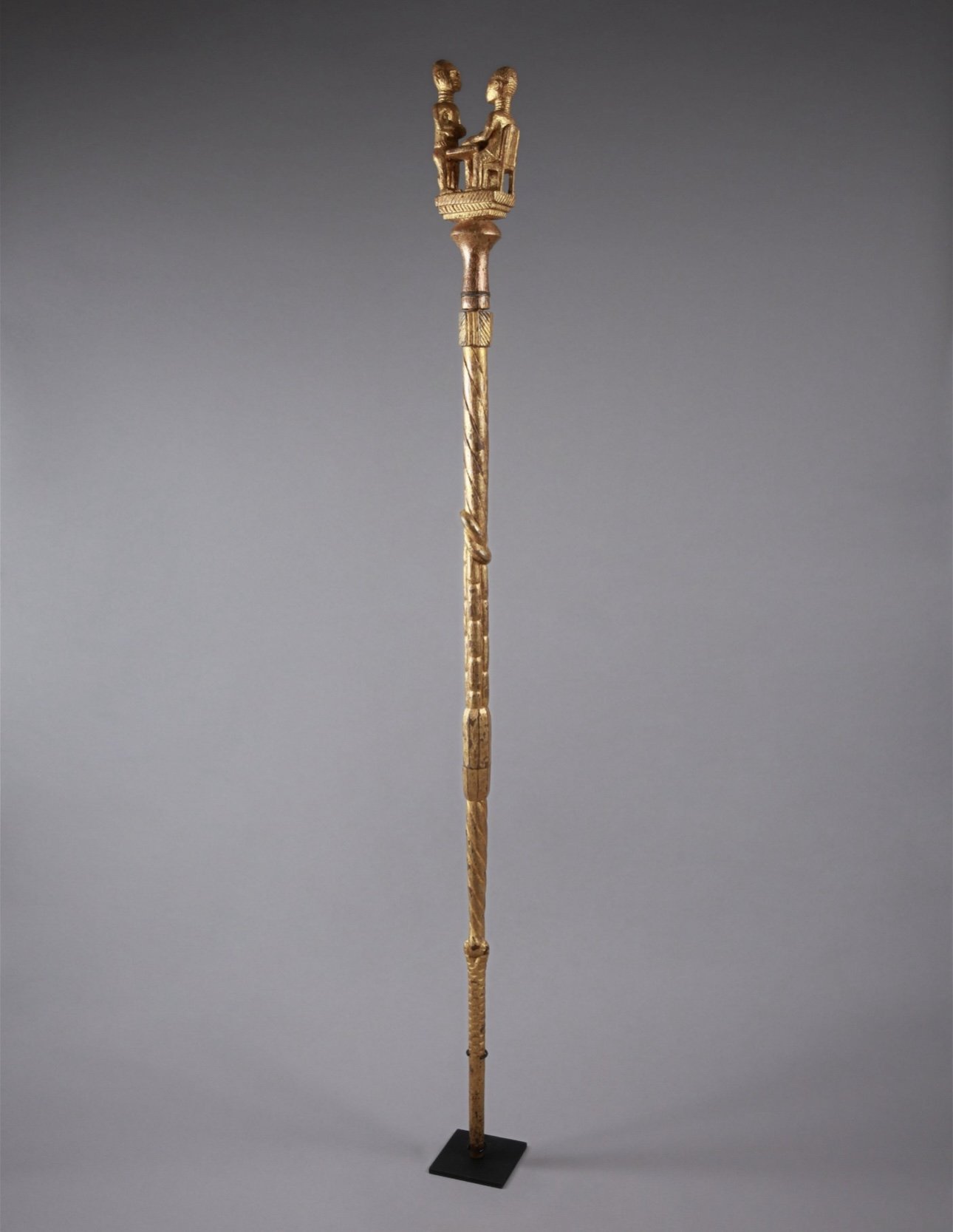
This Asante Okyeame Poma (counselor’s staff) depicts a commonly seen proverb: “The food is for the man who owns it and not for the man who is hungry.” Food here is a metaphor for chieftaincy, which is for the rightful heir and not for one who just hungers for power. Ex René David (1928-2015) Zurich, Ex Jean David, Basel. H 161.5 cm Wood, gold foil.
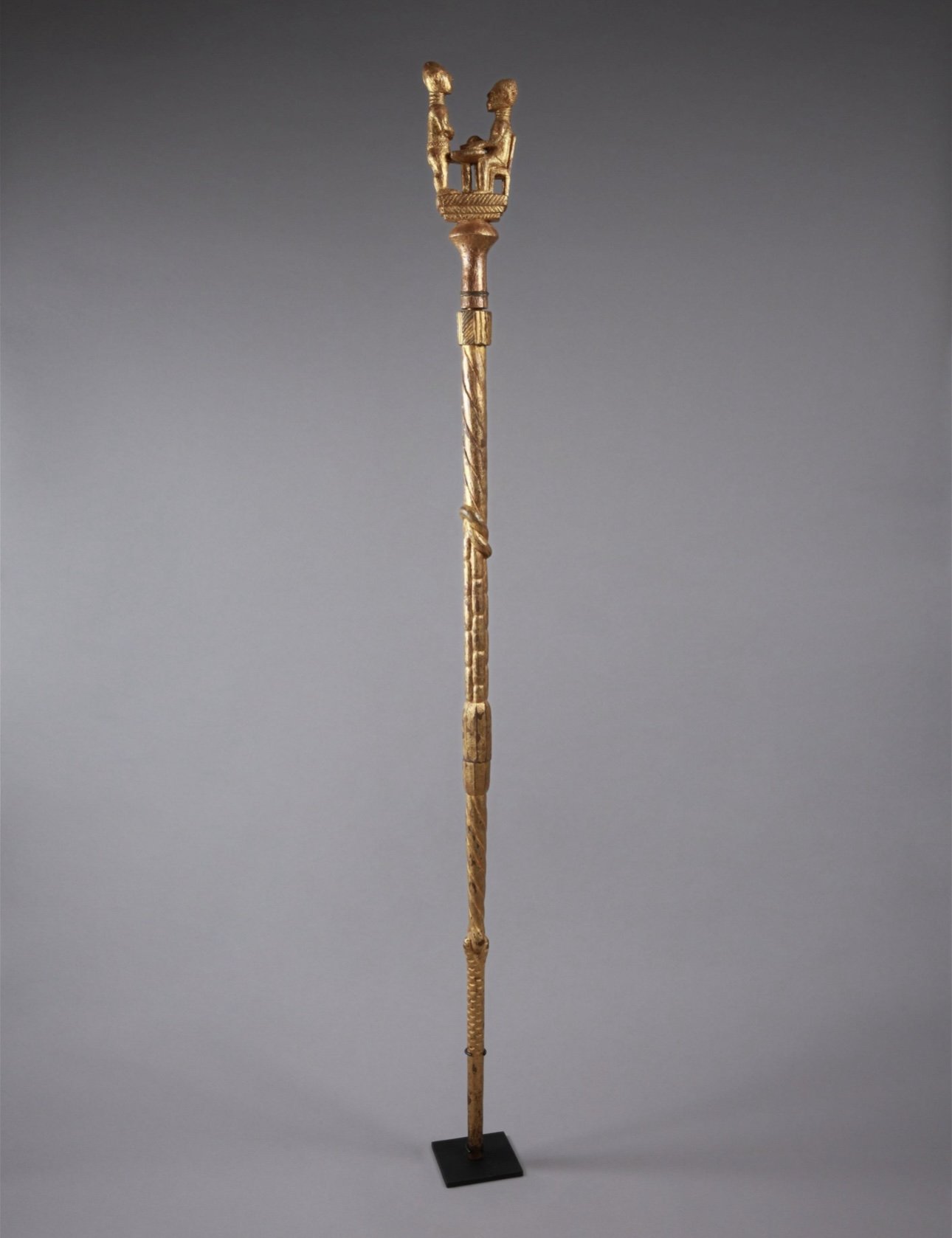

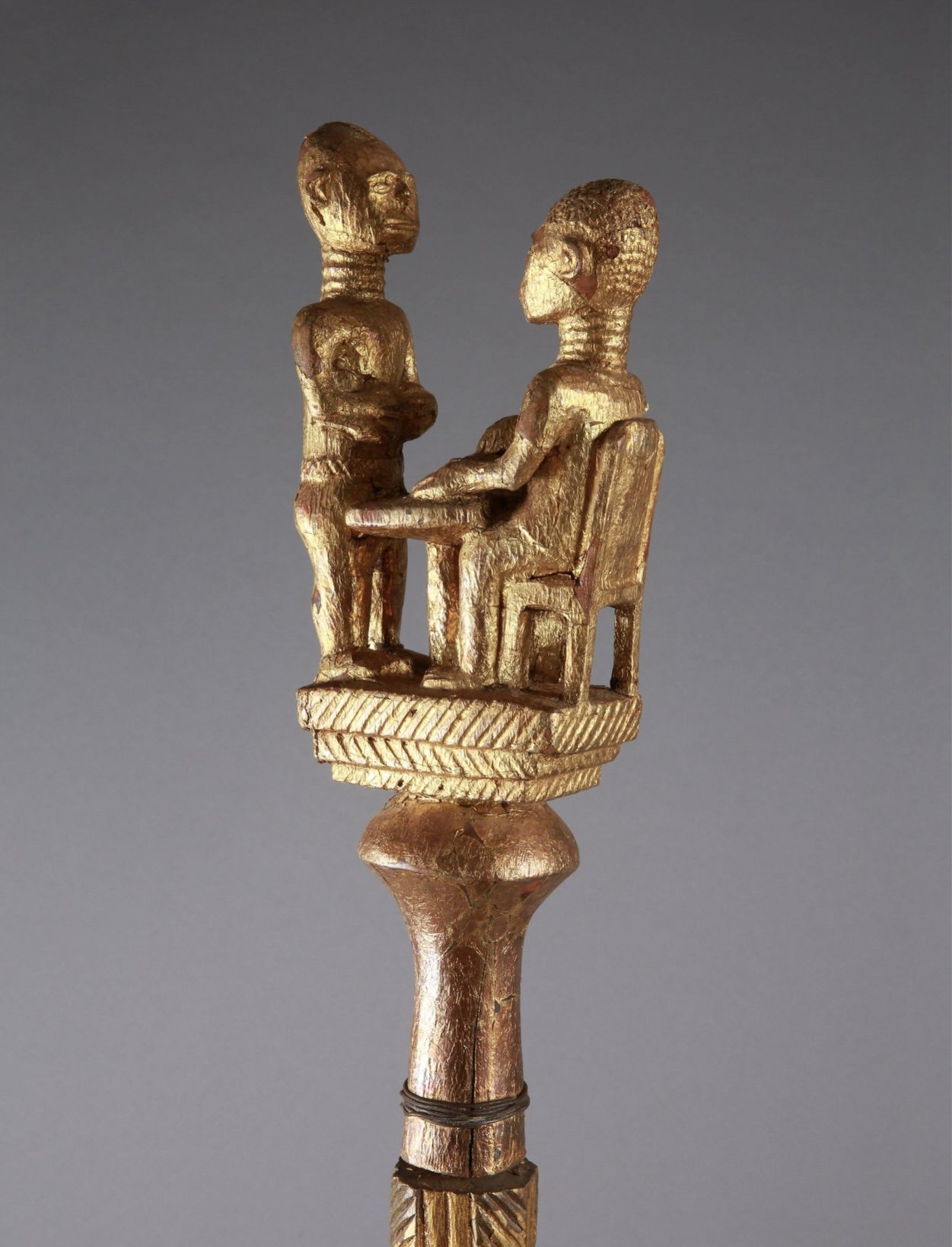
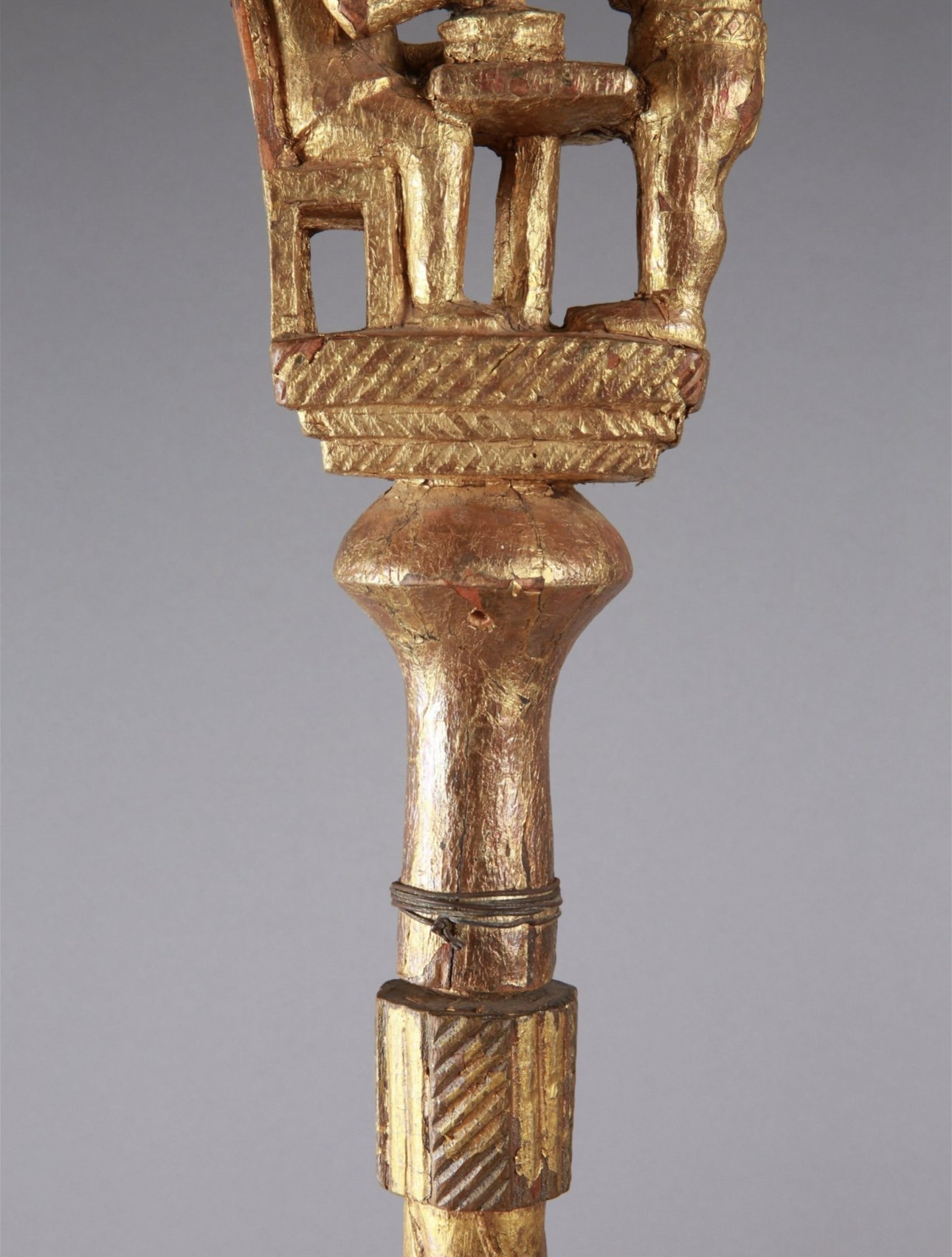
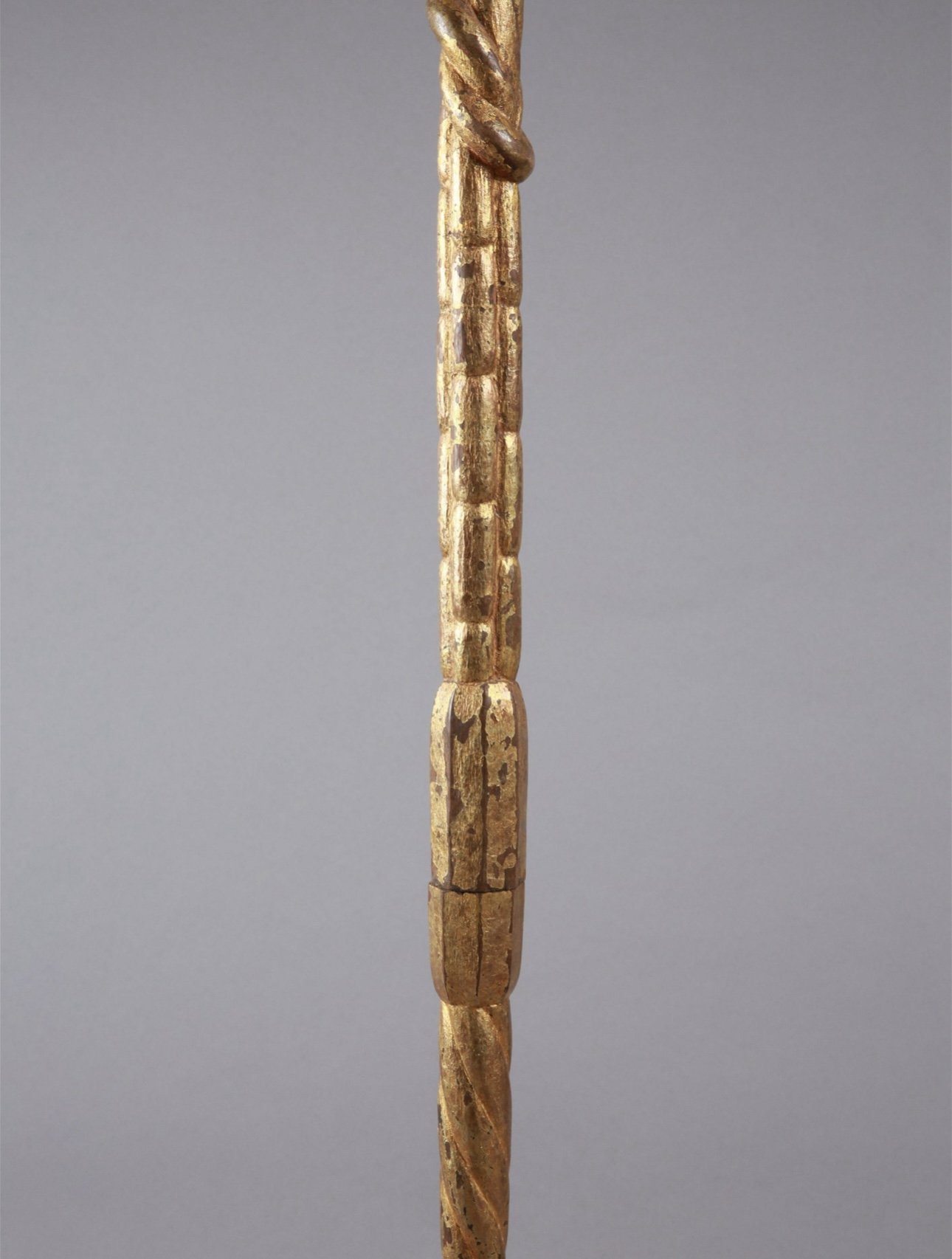
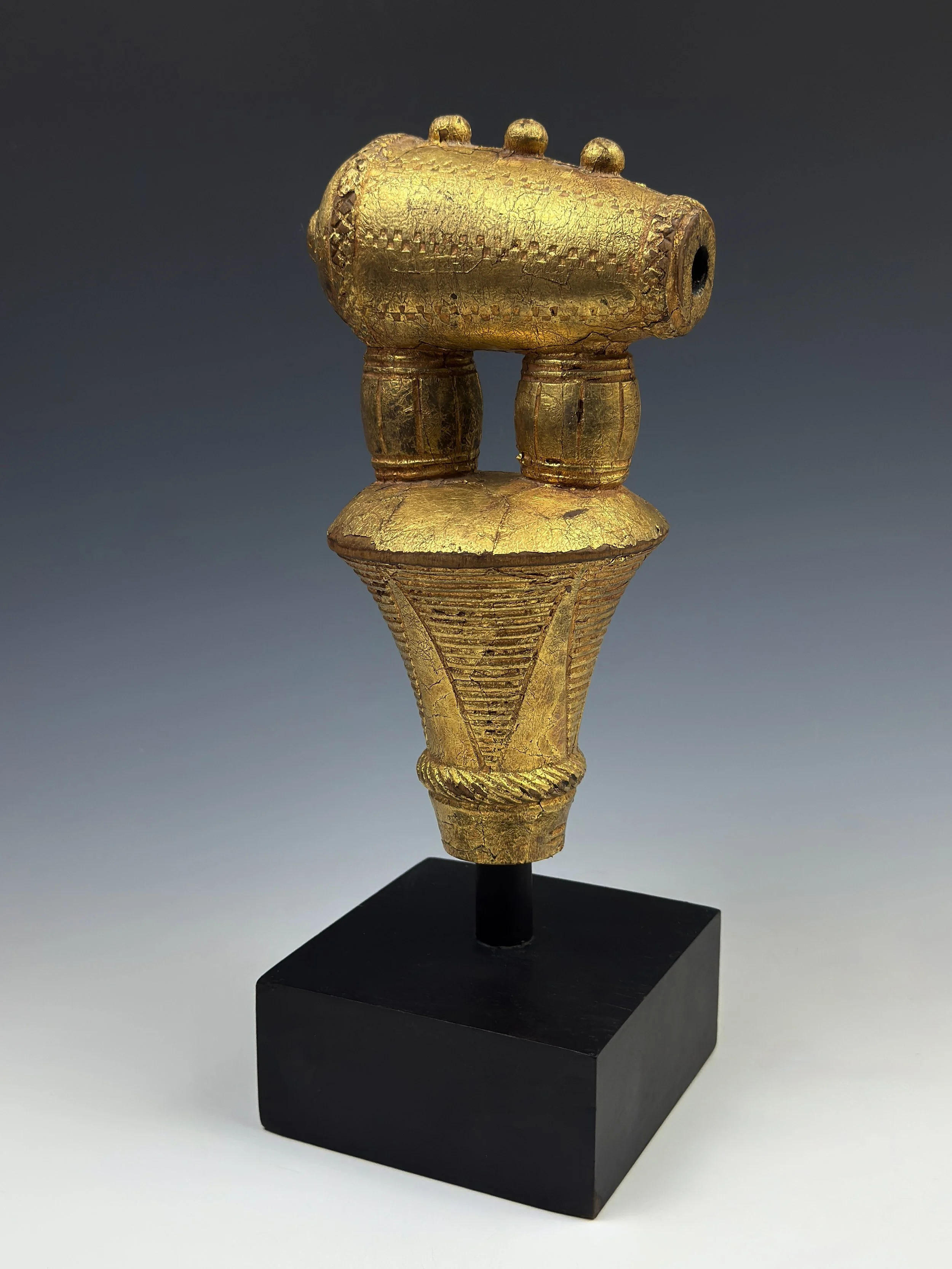
An Akuapem counselor’s staff finial (okyeame poma). Imagery of cannons and powder kegs speaks to the readiness, strength, and power of the state and chief. The imagery also appears to depict 3 cannon balls on the top of the cannon. This example carved of wood and covered with gold leaf is missing the staff segments. The Akuapem is one of the few confederacies in Ghana. It consists of people of Guan and Akan descent. The name Akuapem is an altered form of the Akan Twi word “Nkuu apem” meaning “thousand groups” given by the warrior king Nana Ansa Sasraku I of Akwamu. Ex Amyas Naegele, NY, Ex Long Island, NY Private Collection
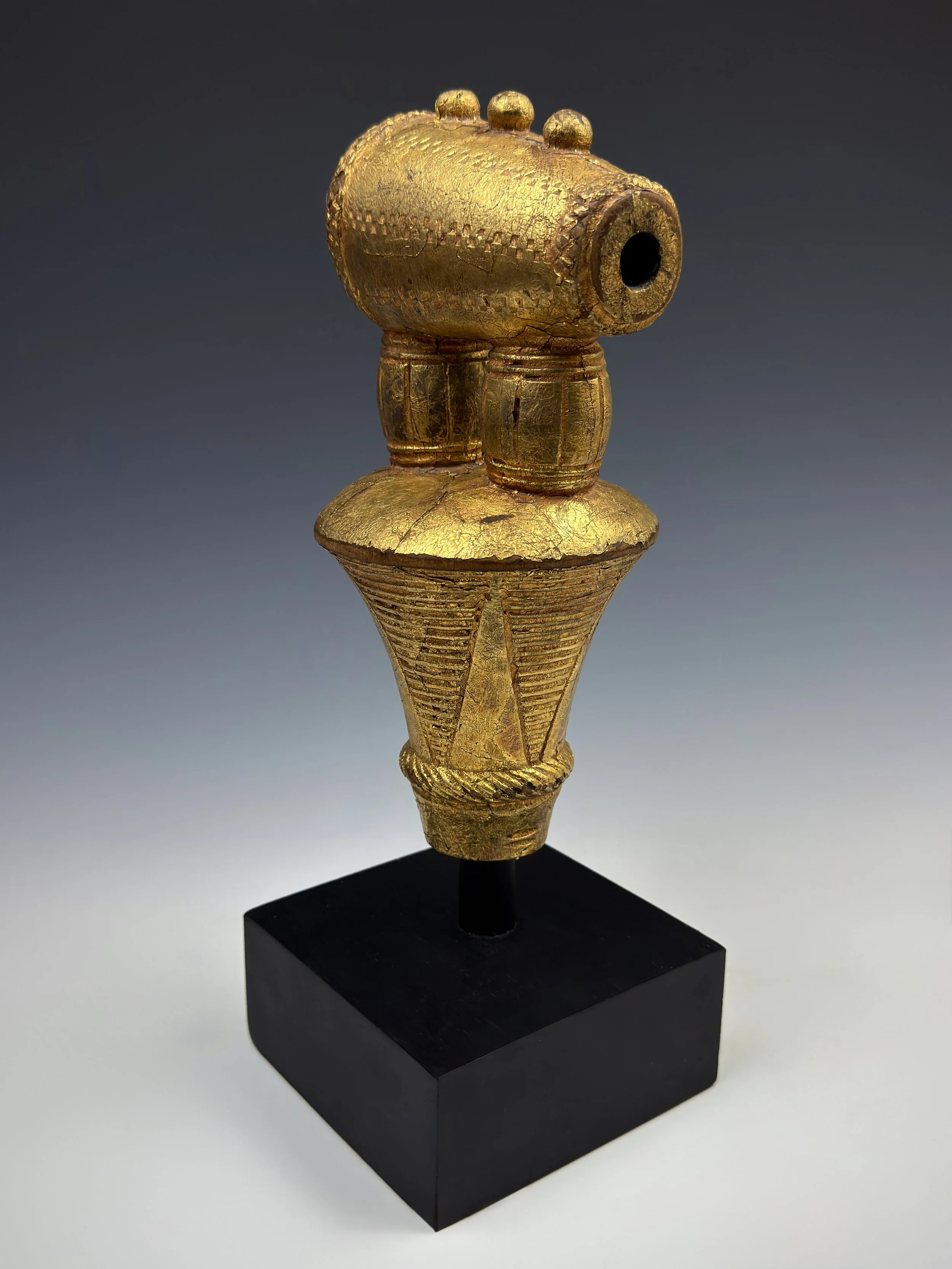
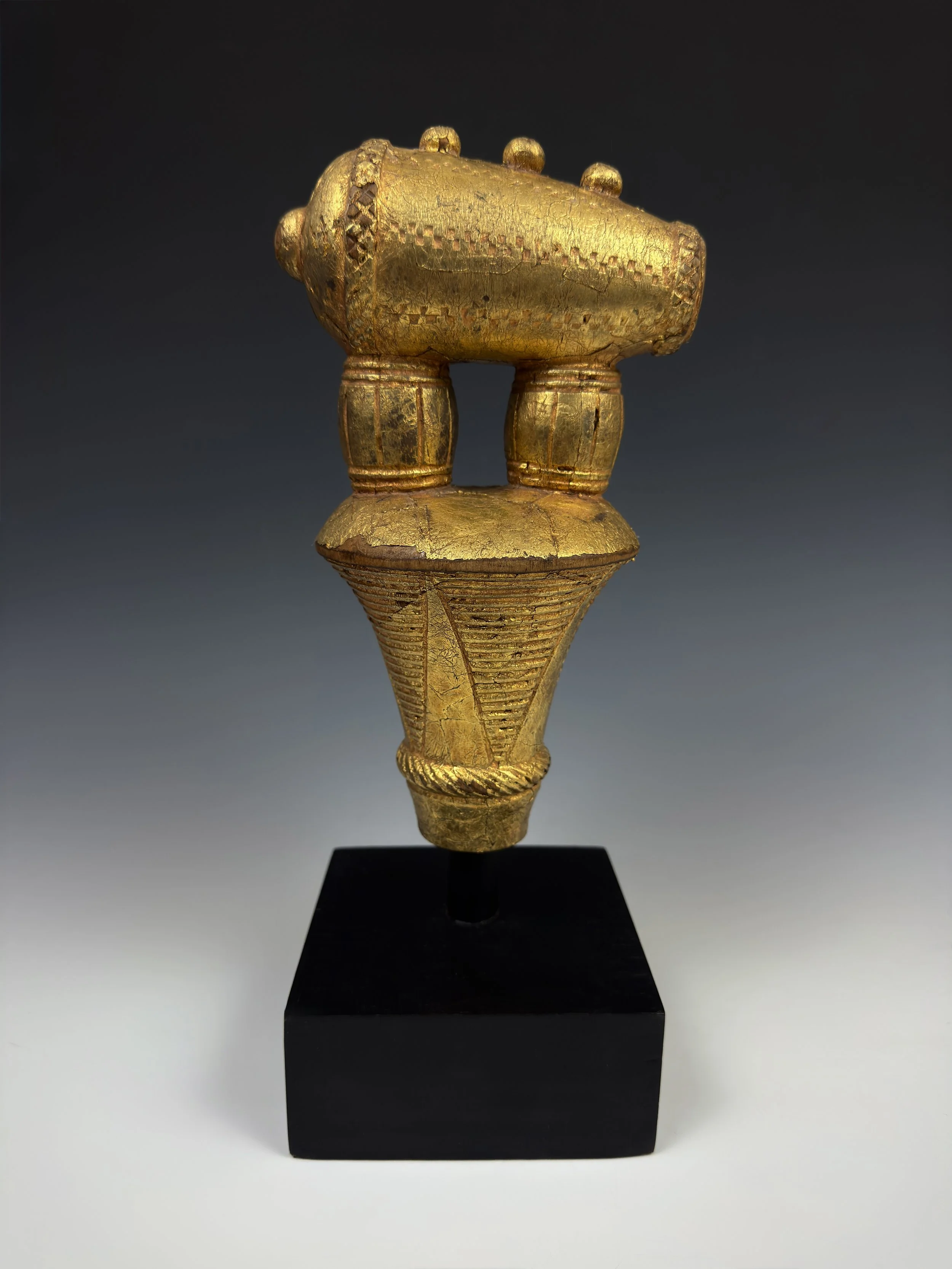
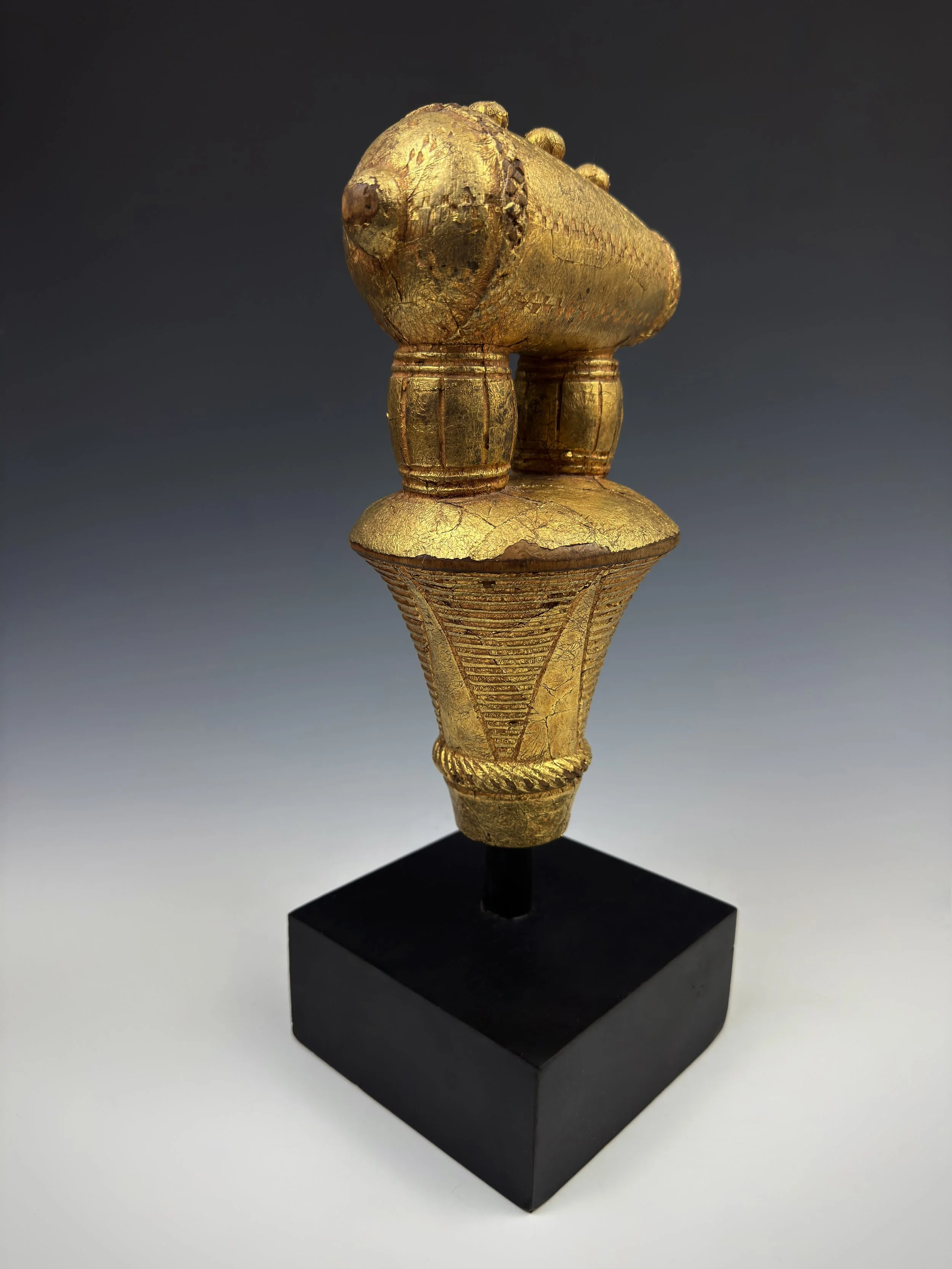
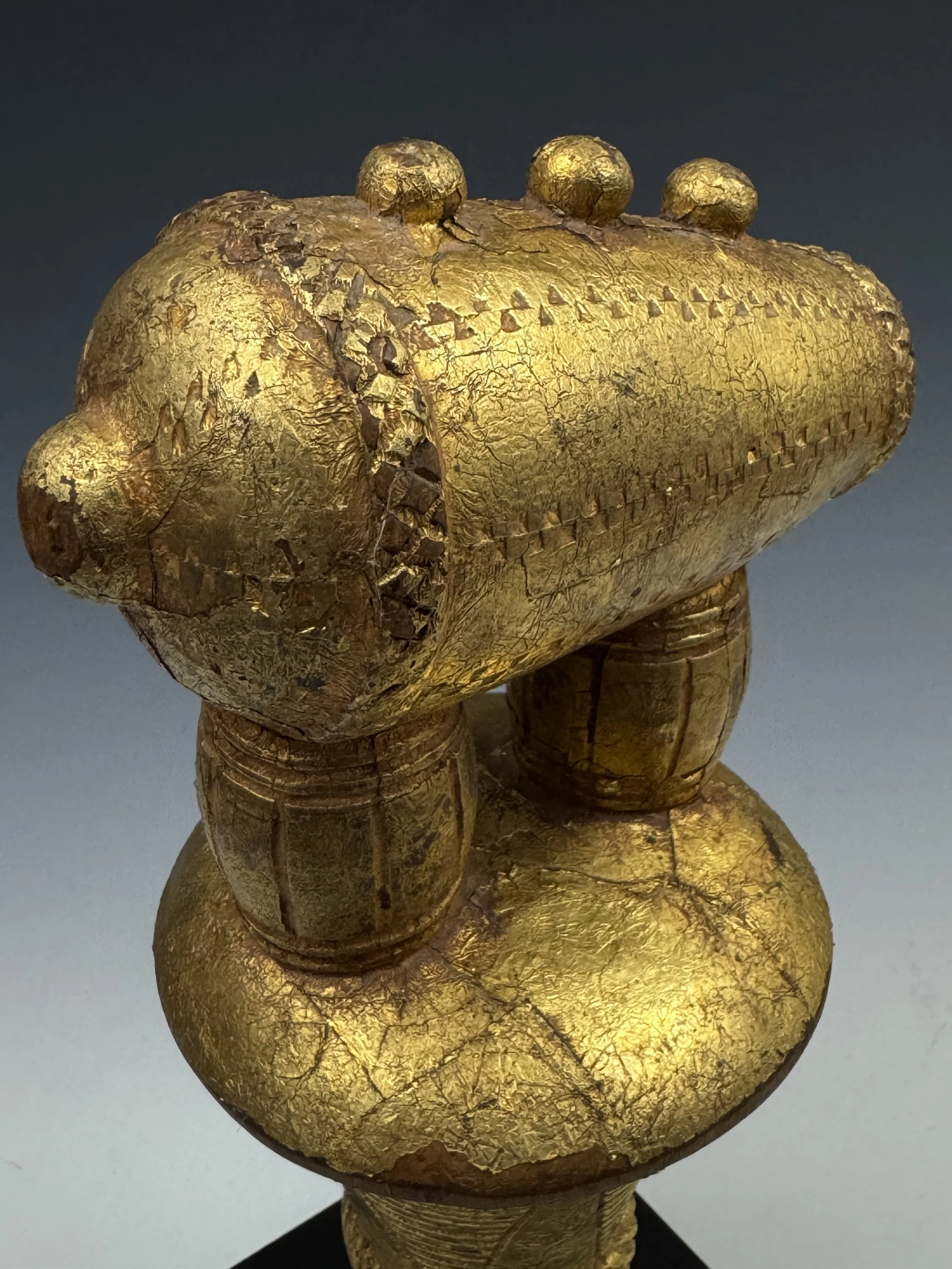
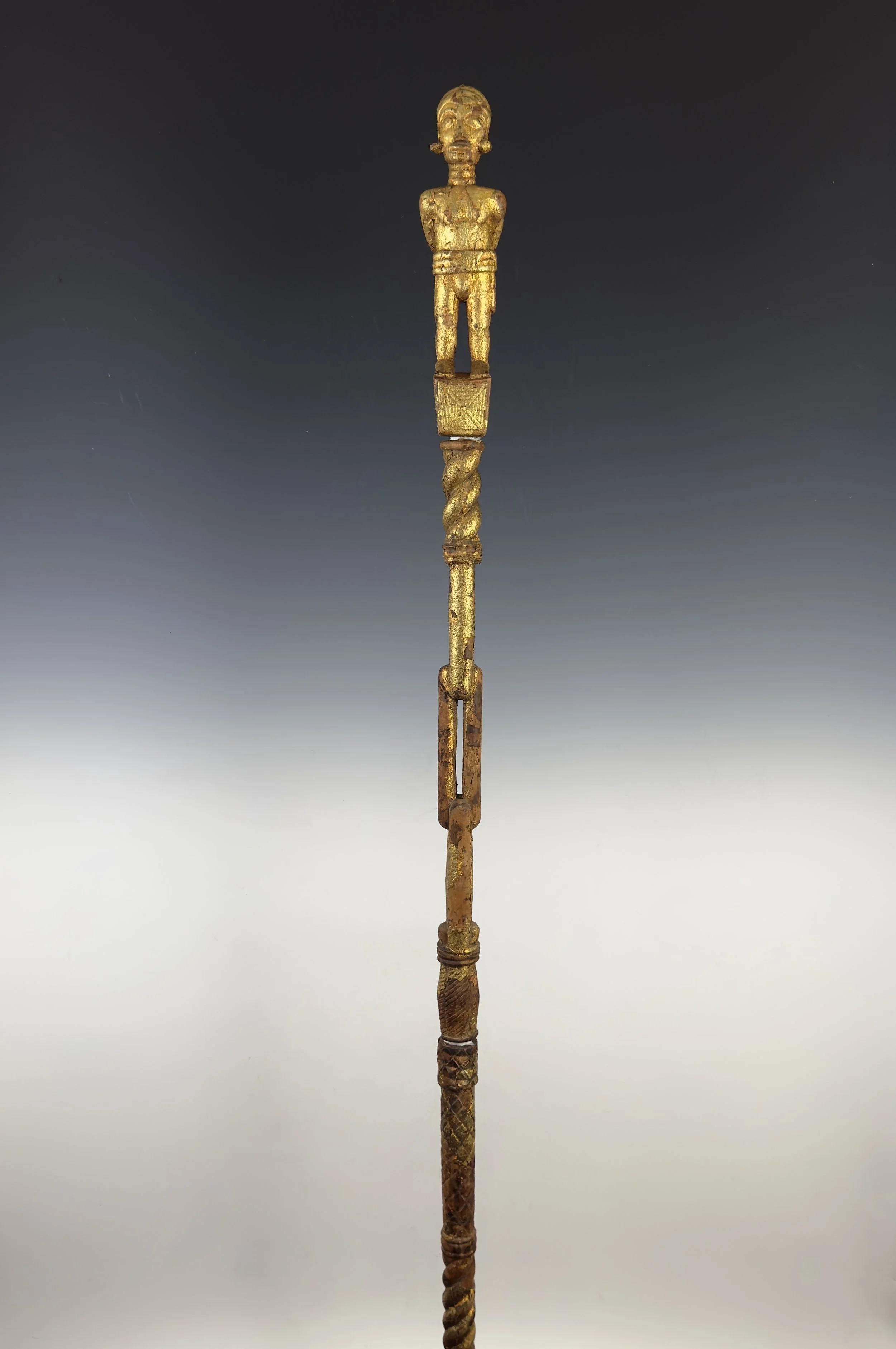
An Akan counselor’s staff (okyeame poma), carved wood covered with gold leaf. Ghana. The staff is in three sections consisting of the finial on top, and two lower segmented staff sections. Michelle Gilbert describes the staff as “Showing a prisoner about to be sacrificed: his hands are bound behind his back. A sepo (knife) is in his mouth to prevent him from swearing the great oath.” Ht 60" EX Amyas Naegele, NYC, Ex Michele Gilbert. Ex William Wright gallery, NYC Cf. M.Gilbert "Disguising the pain of remembering in Akwapim", Africa 80(3), 2010 pp. 426-452. Cf. M. Gilbert "The leopard who sleeps in a basket: Akuapem secrecy in everyday life and royal metaphor" in M.H. Nooter (ed) Secrecy: African art that conceals and reveals 1993, Museum for African Art"
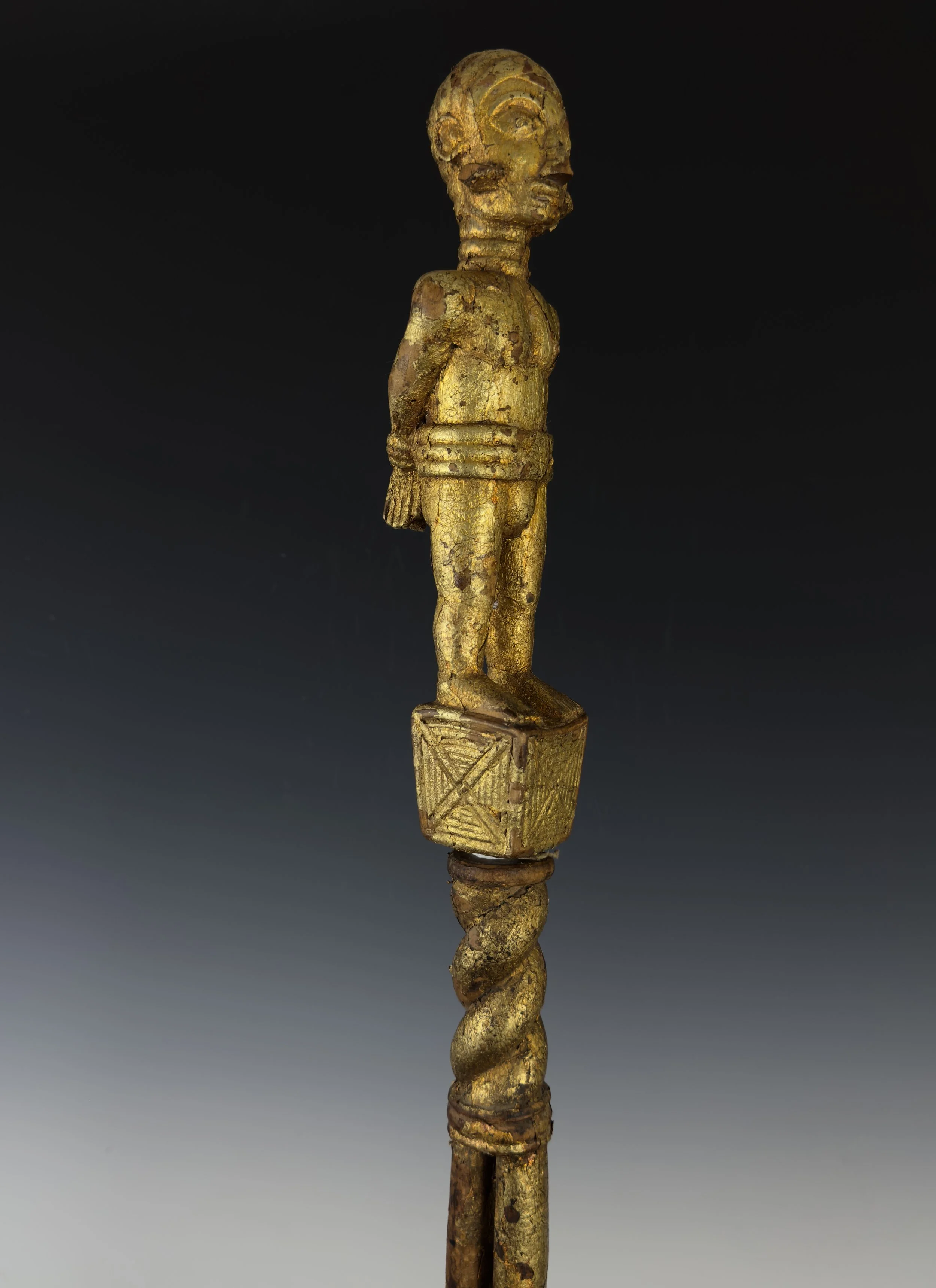
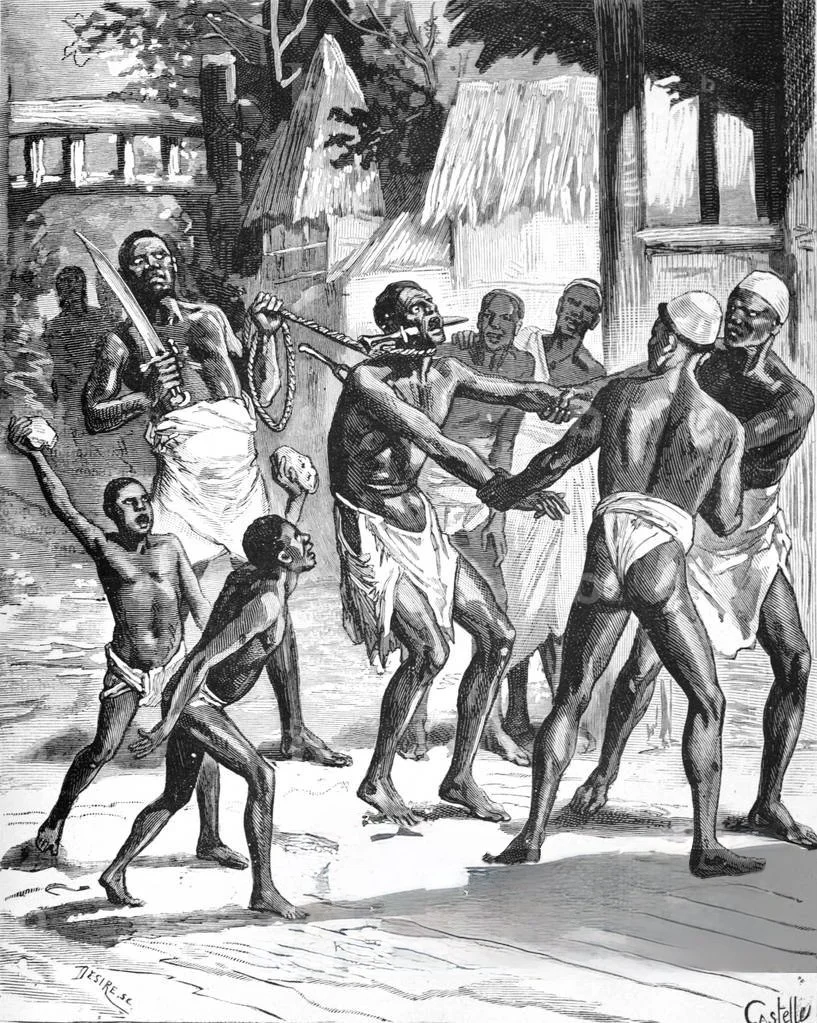
An engraving published in 1882 depicts an Ashanti prisoner condemned to death, being led by his executioners. The image shows a sepɔ (knife) pierced through his cheeks similarly to the figure on the finial of this linguist staff. A ritual executioner, known as an obrafo (Abrafo plural), would use a special knife called a sepo to pin a victim's tongue by thrusting it through their cheeks.The main purpose of this brutal act was to silence the victim during their impending death. By preventing them from speaking, the executioners believed they were stopping the person from casting a curse on the Asantehene, or king.
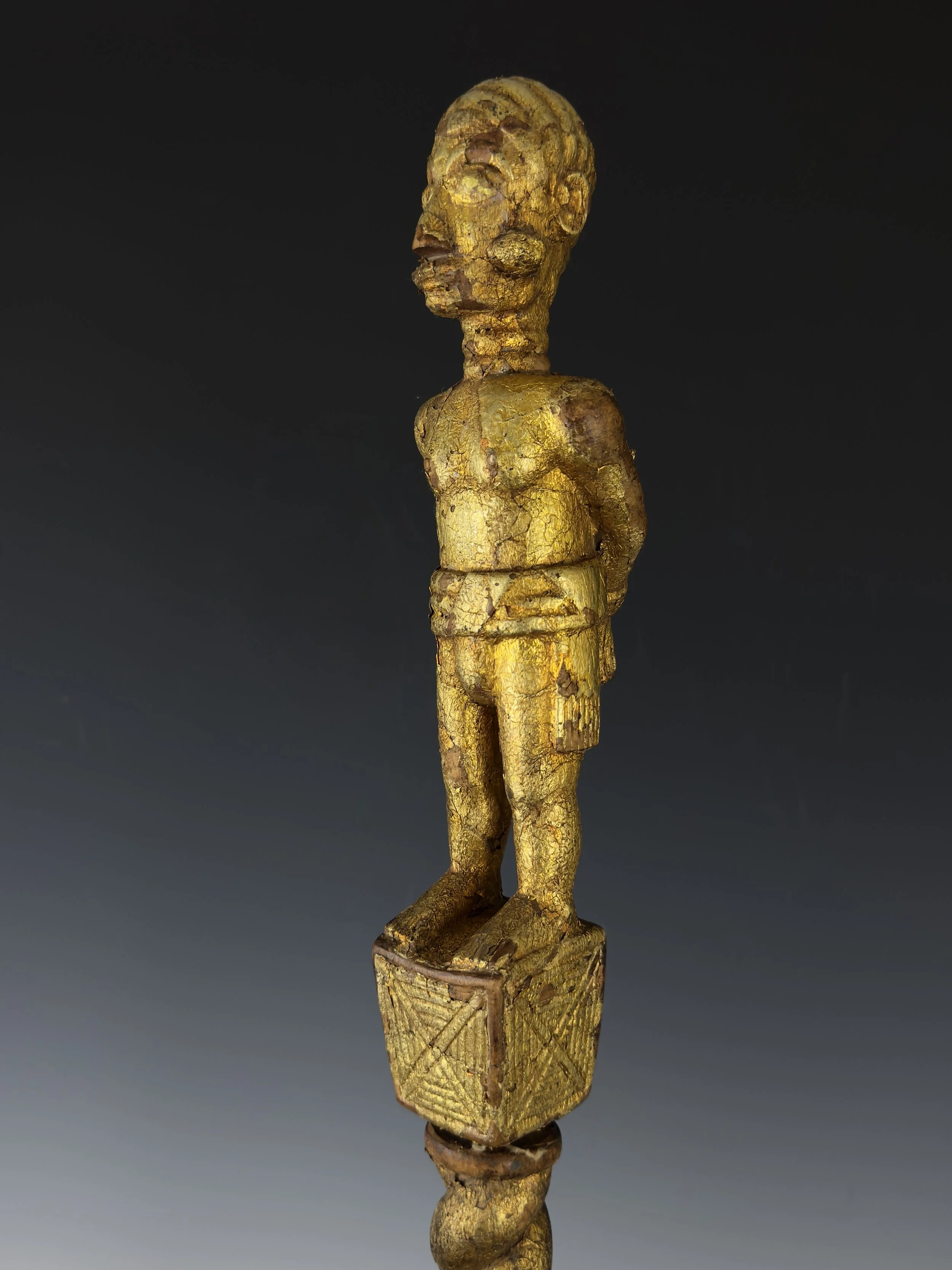
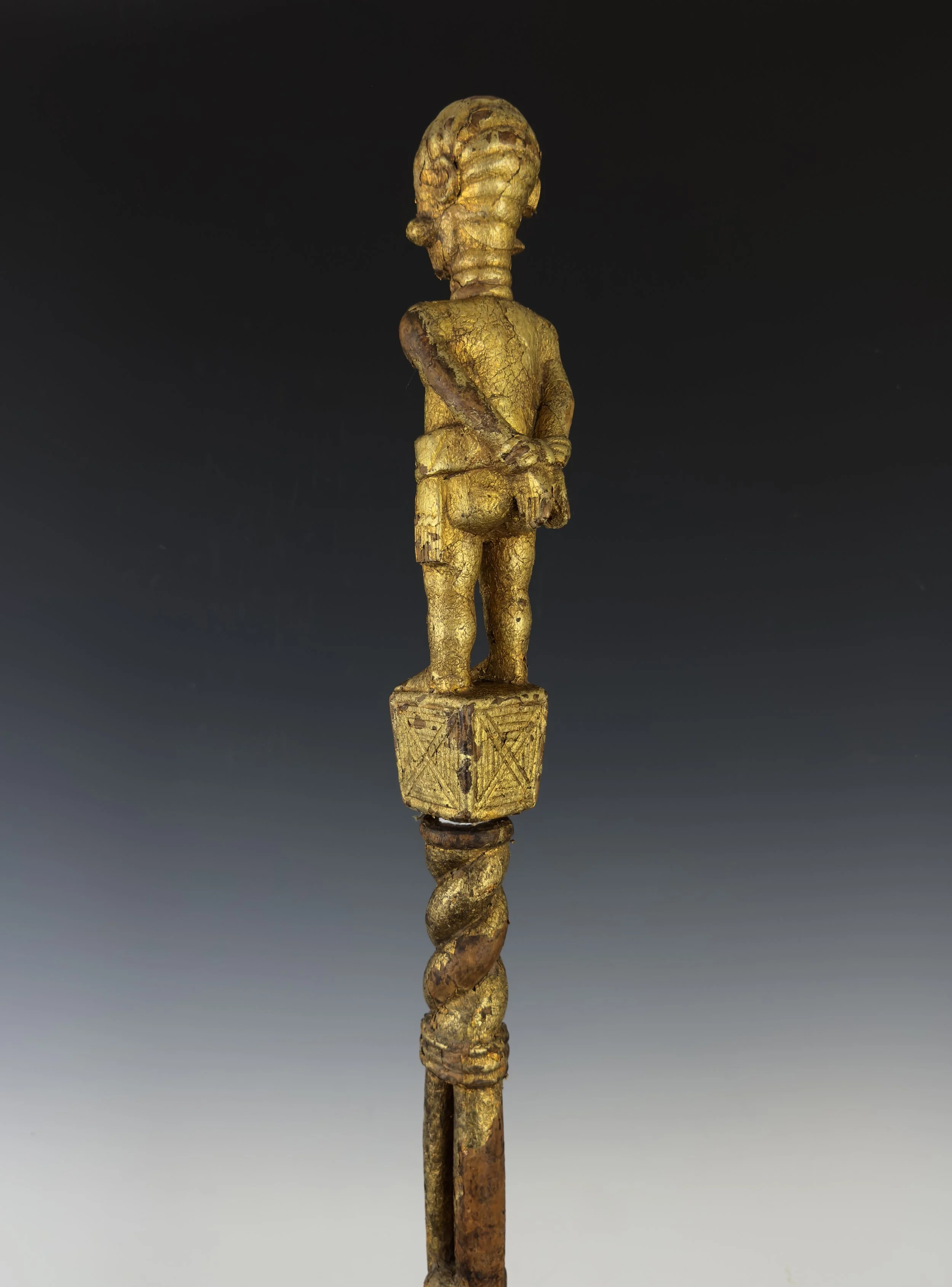
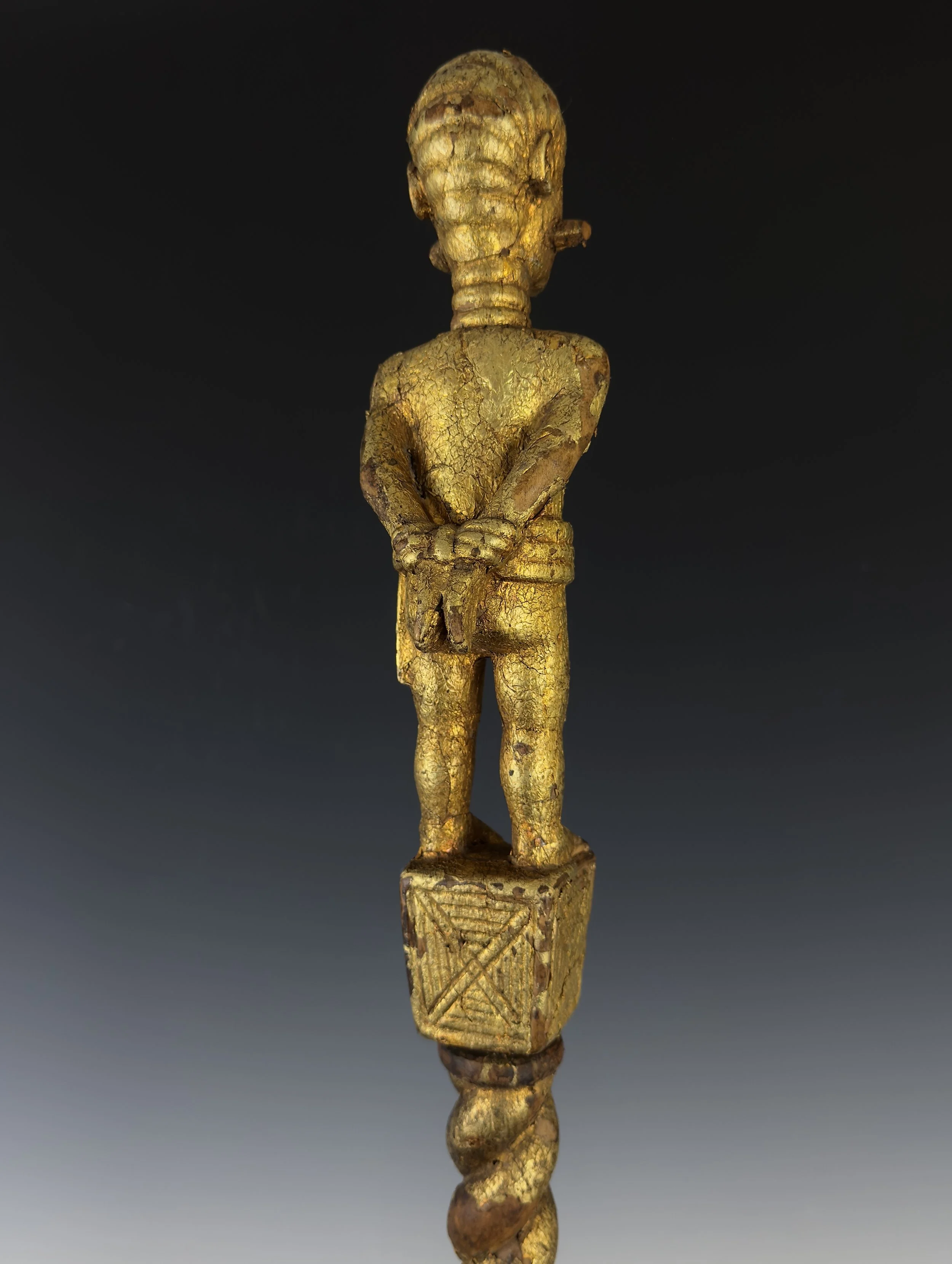
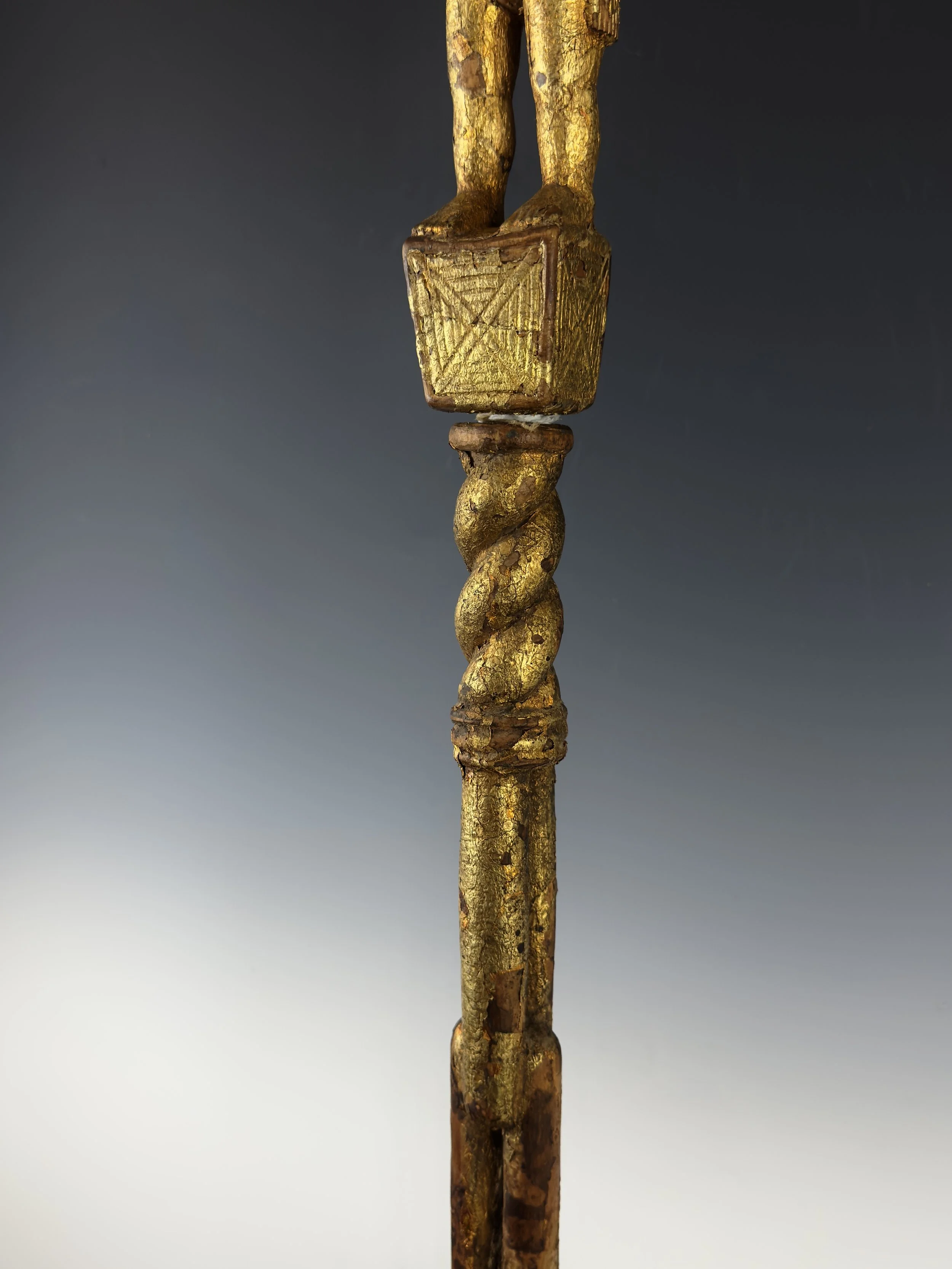
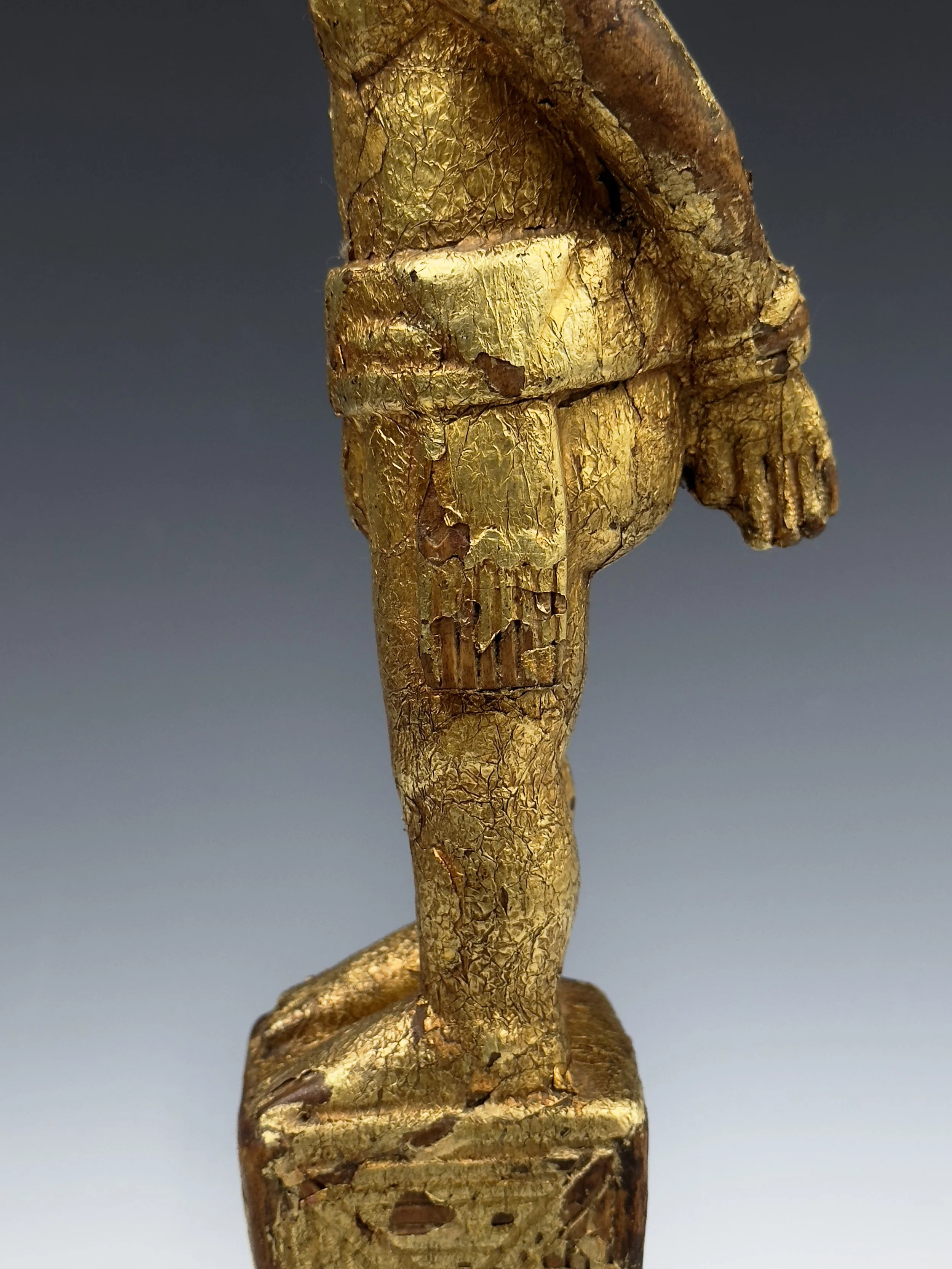
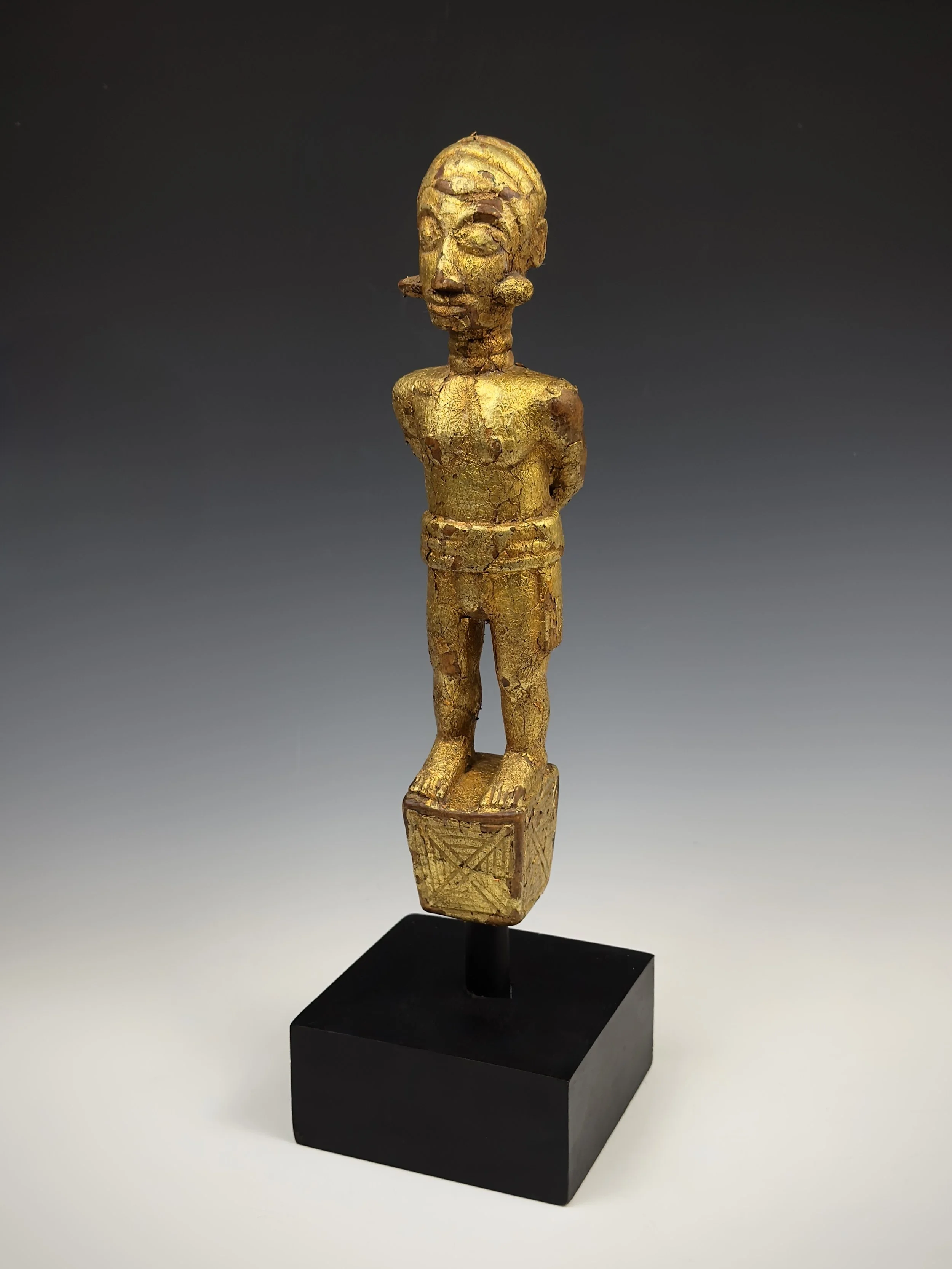
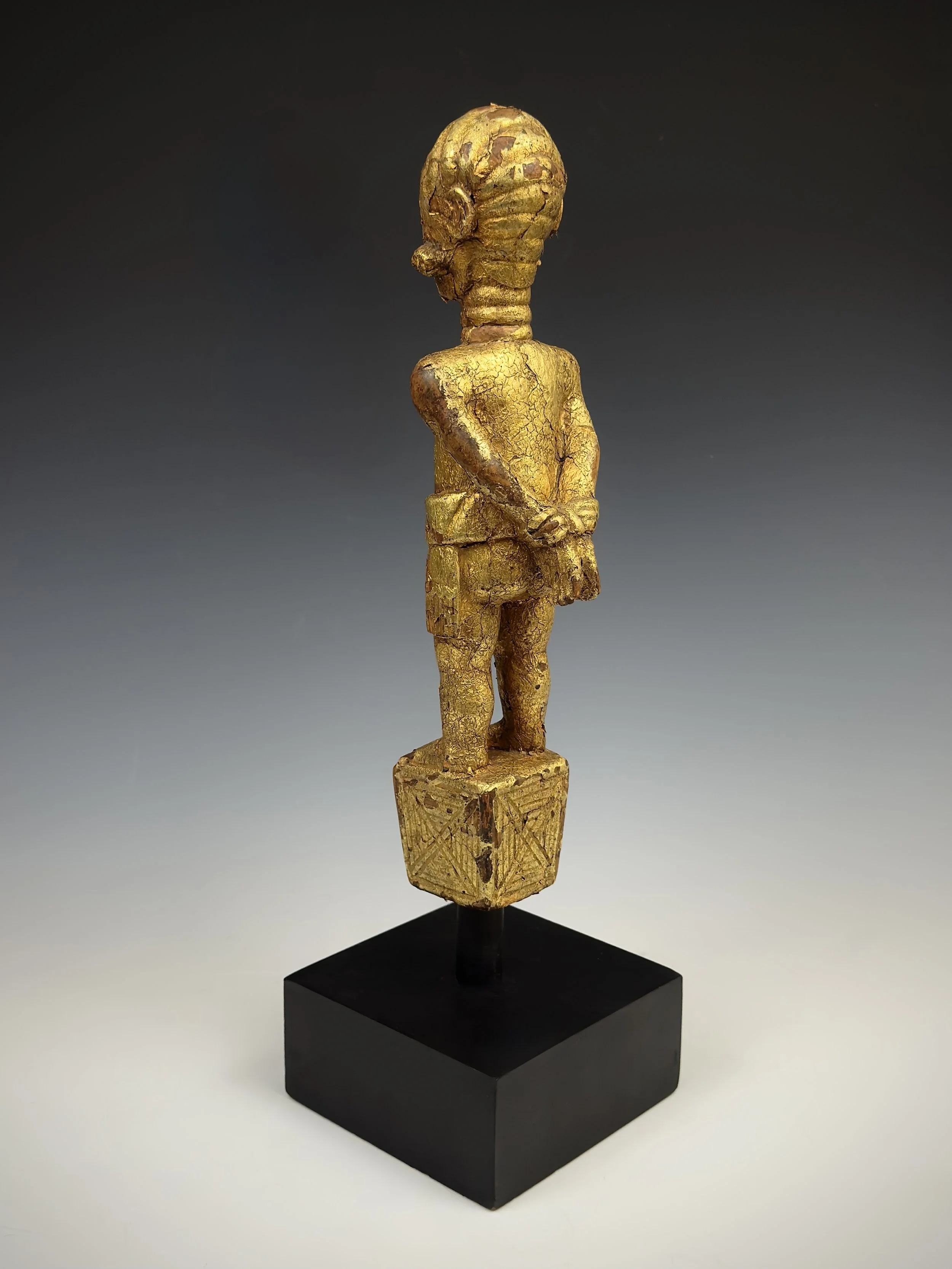
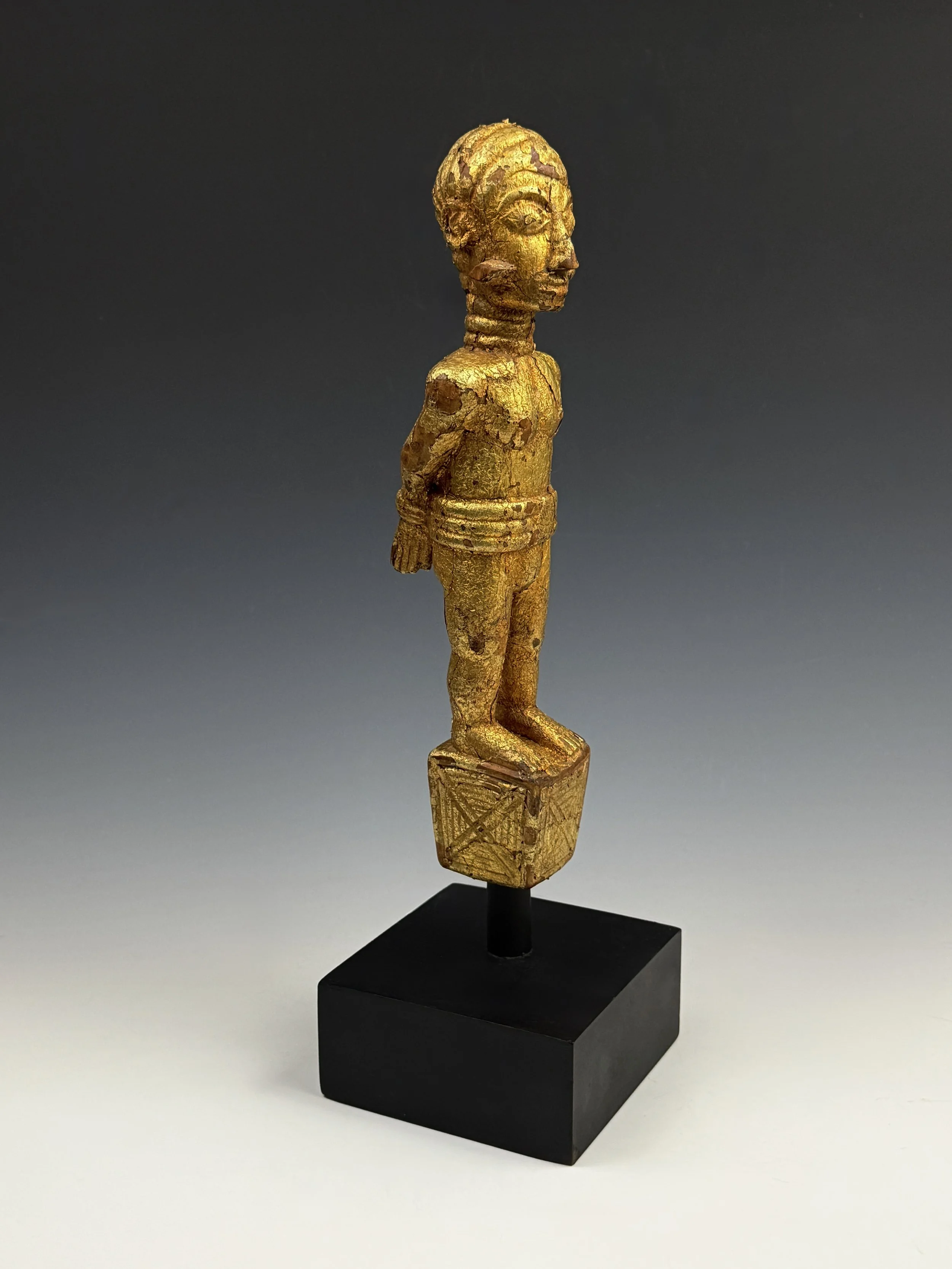
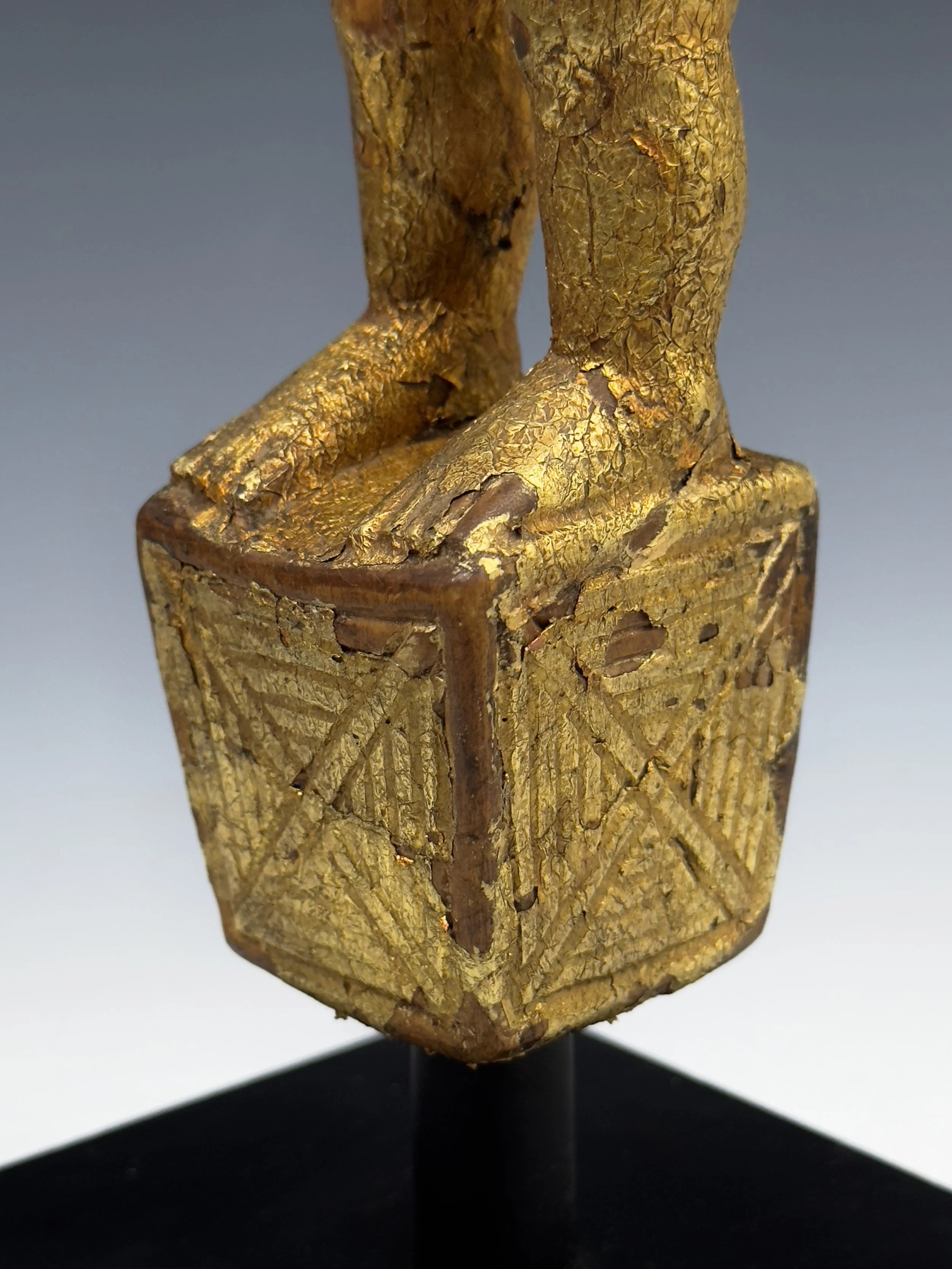
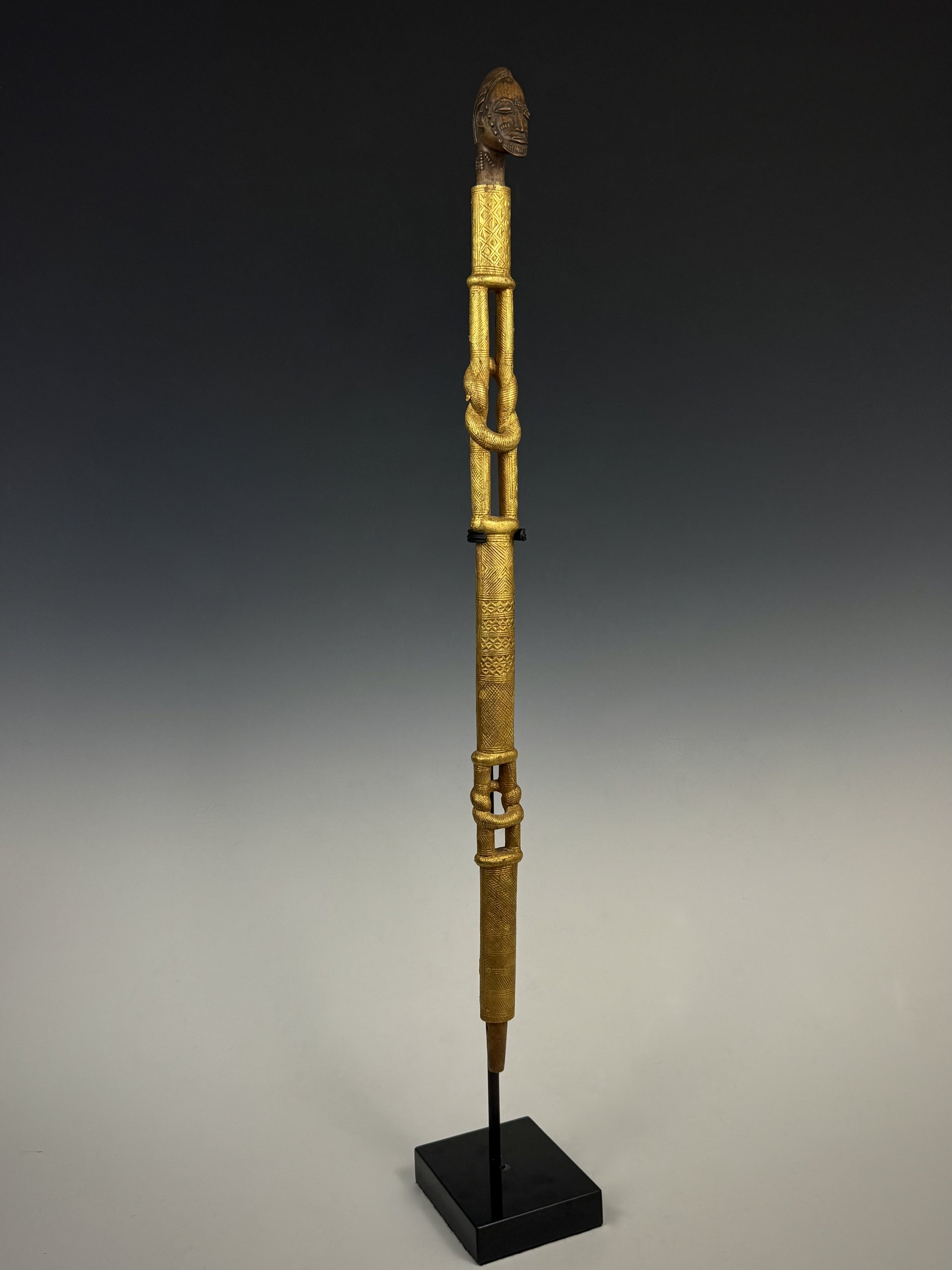
This is a beautifully carved Baule or Akan staff fragment with the bottom half section missing. Wood, covered with gold foil. 30” L (Côte d’Ivoire). It is most likely a chief’s staff or possibly a Baule variation of the Akan linguist staff. The staff finial is an idealized male head with strong Baule characteristics and similarities to the heads of the “blolo bian” spirit figures. Two wisdom knots often seen in Akan imagery alternate with geometric patterns down the staff’s shaft. The missing bottom half of the staff most likely continued this motif terminating with a tapered end.
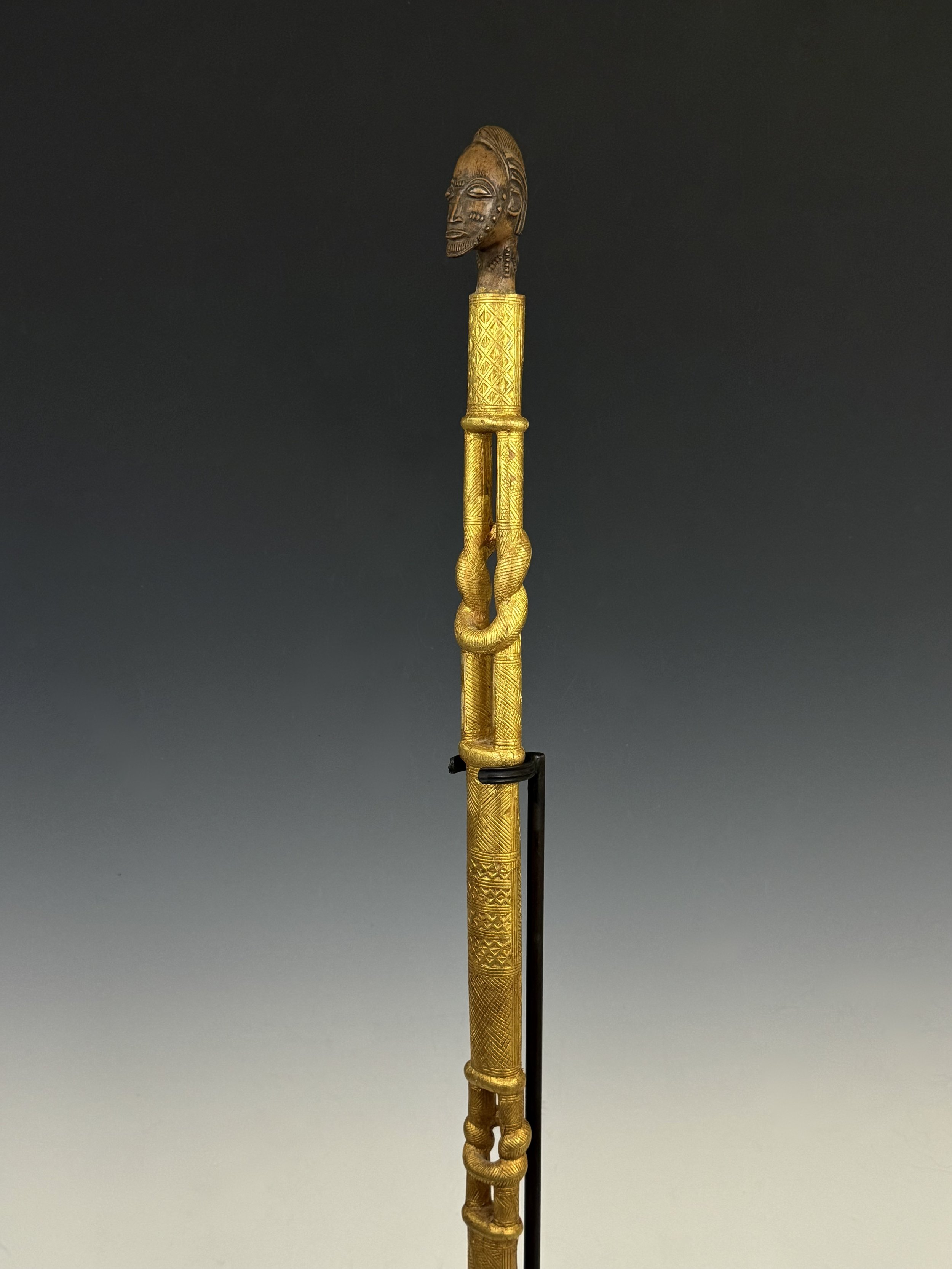
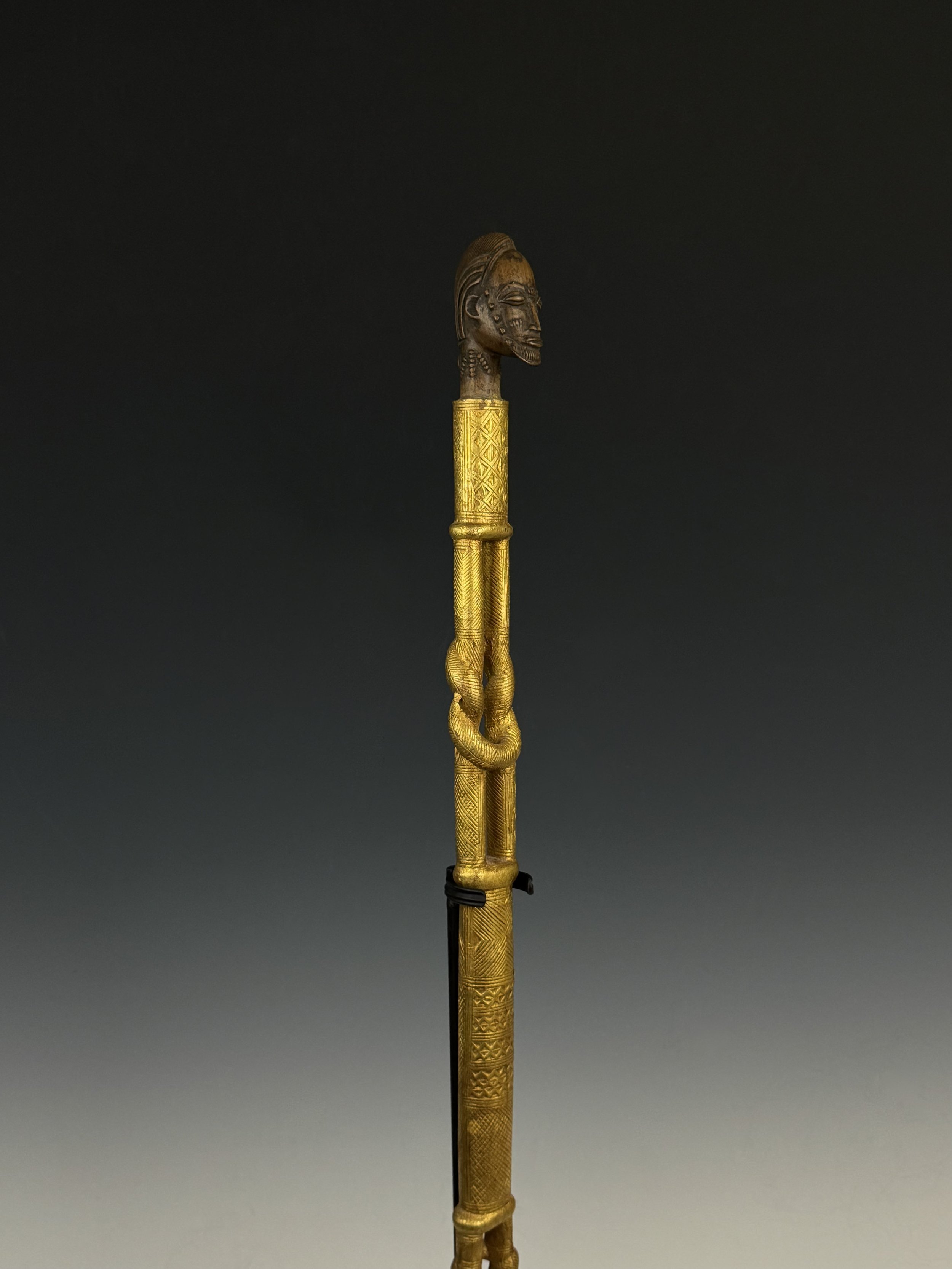
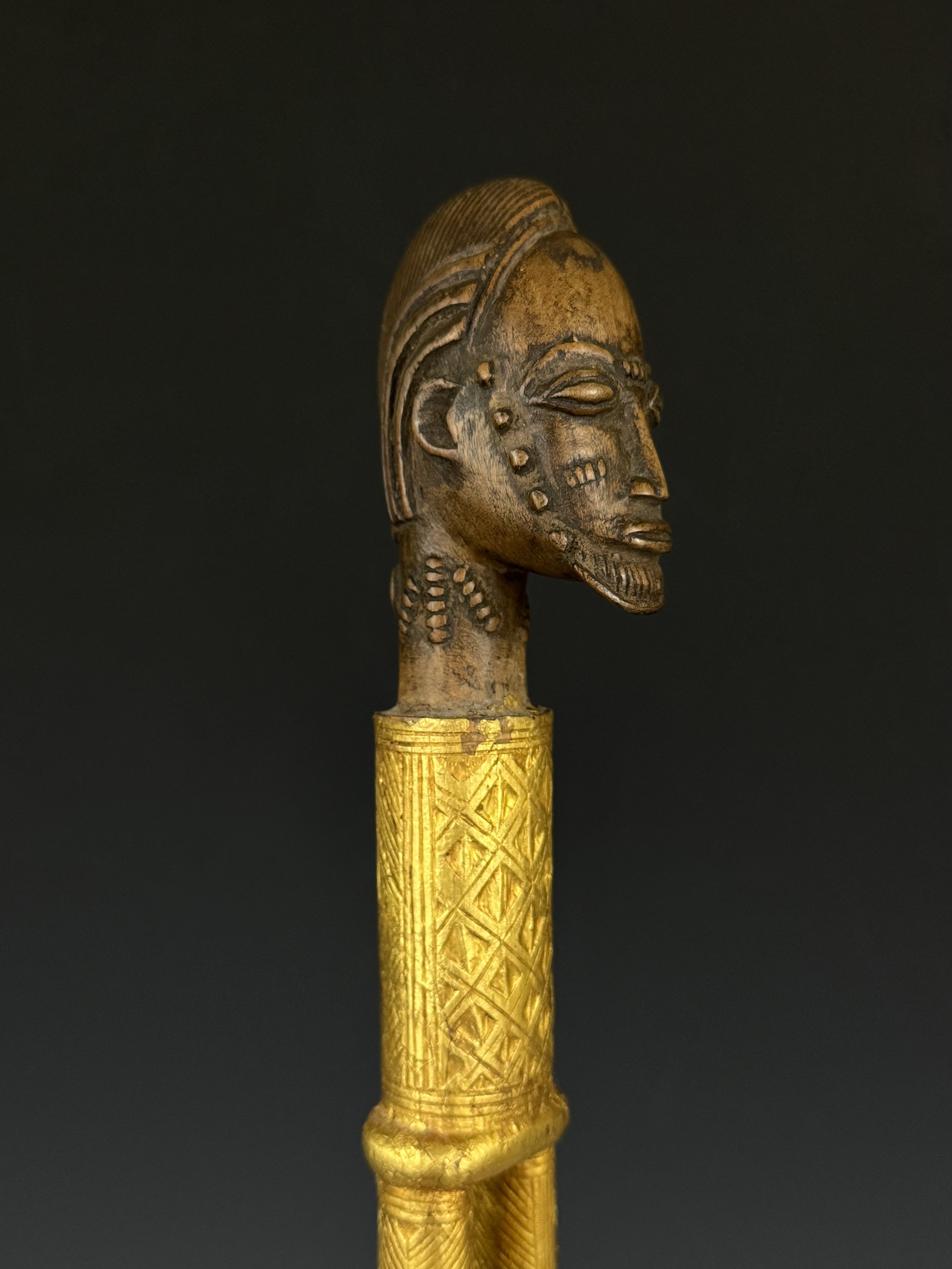
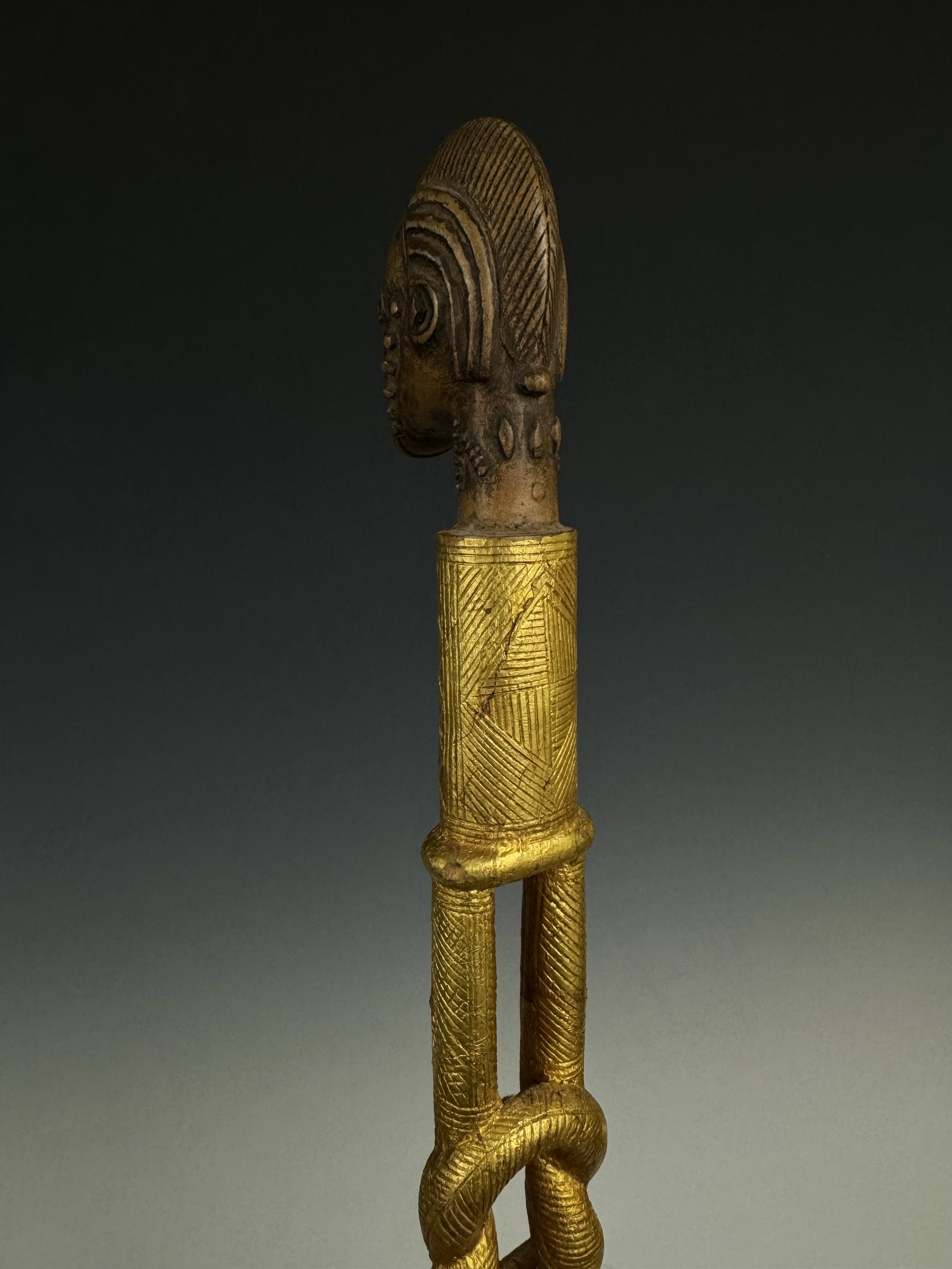
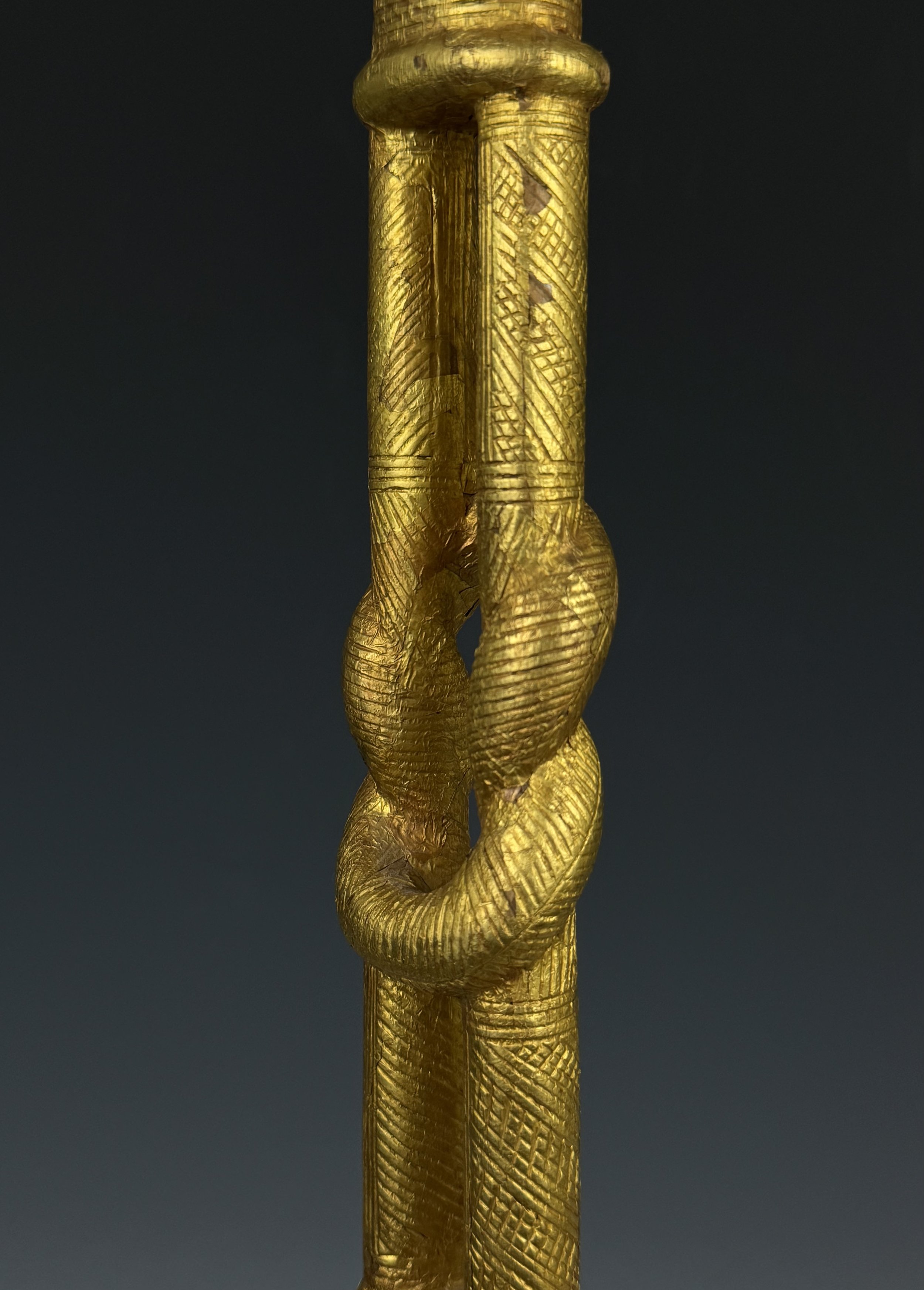
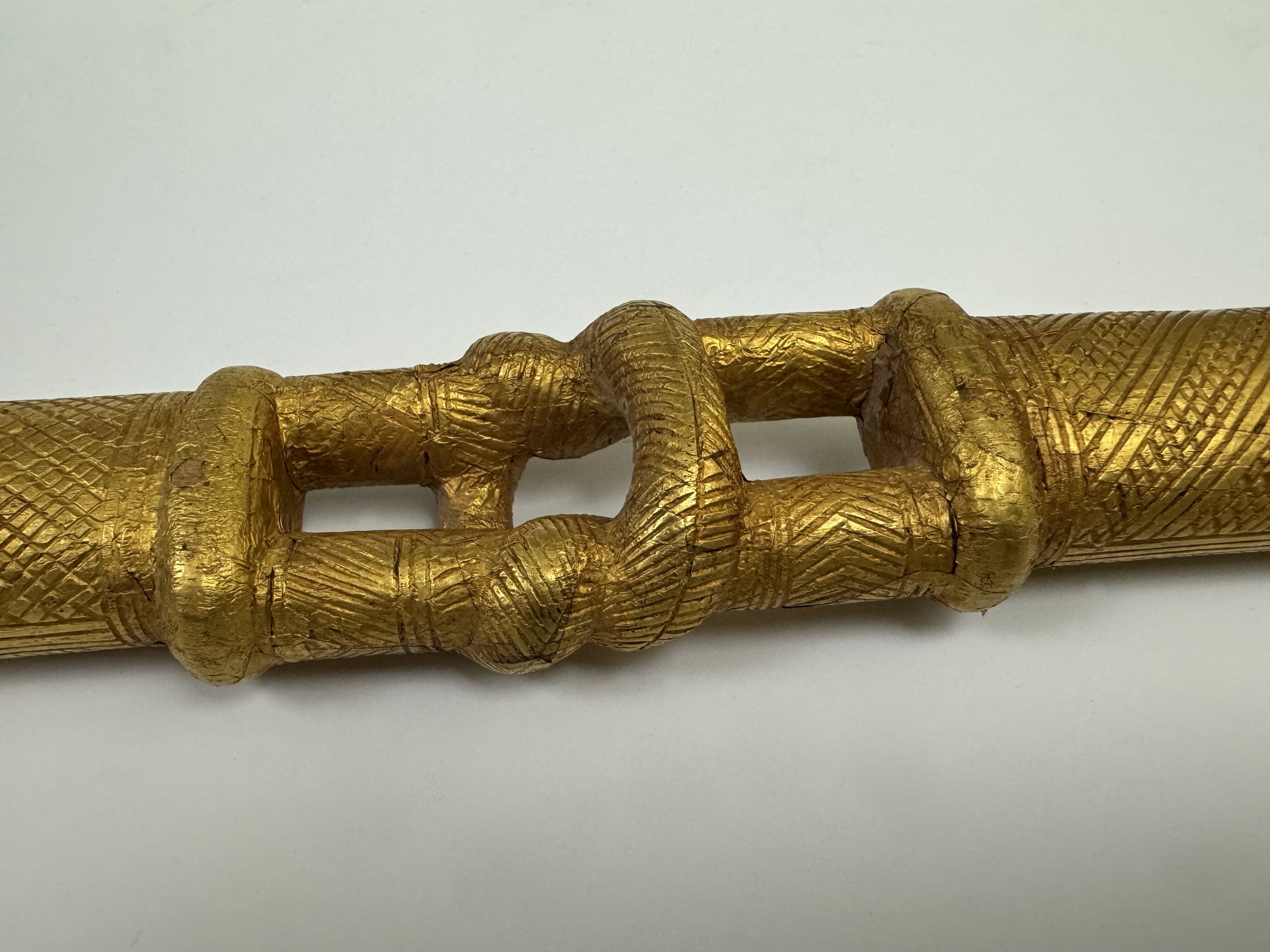
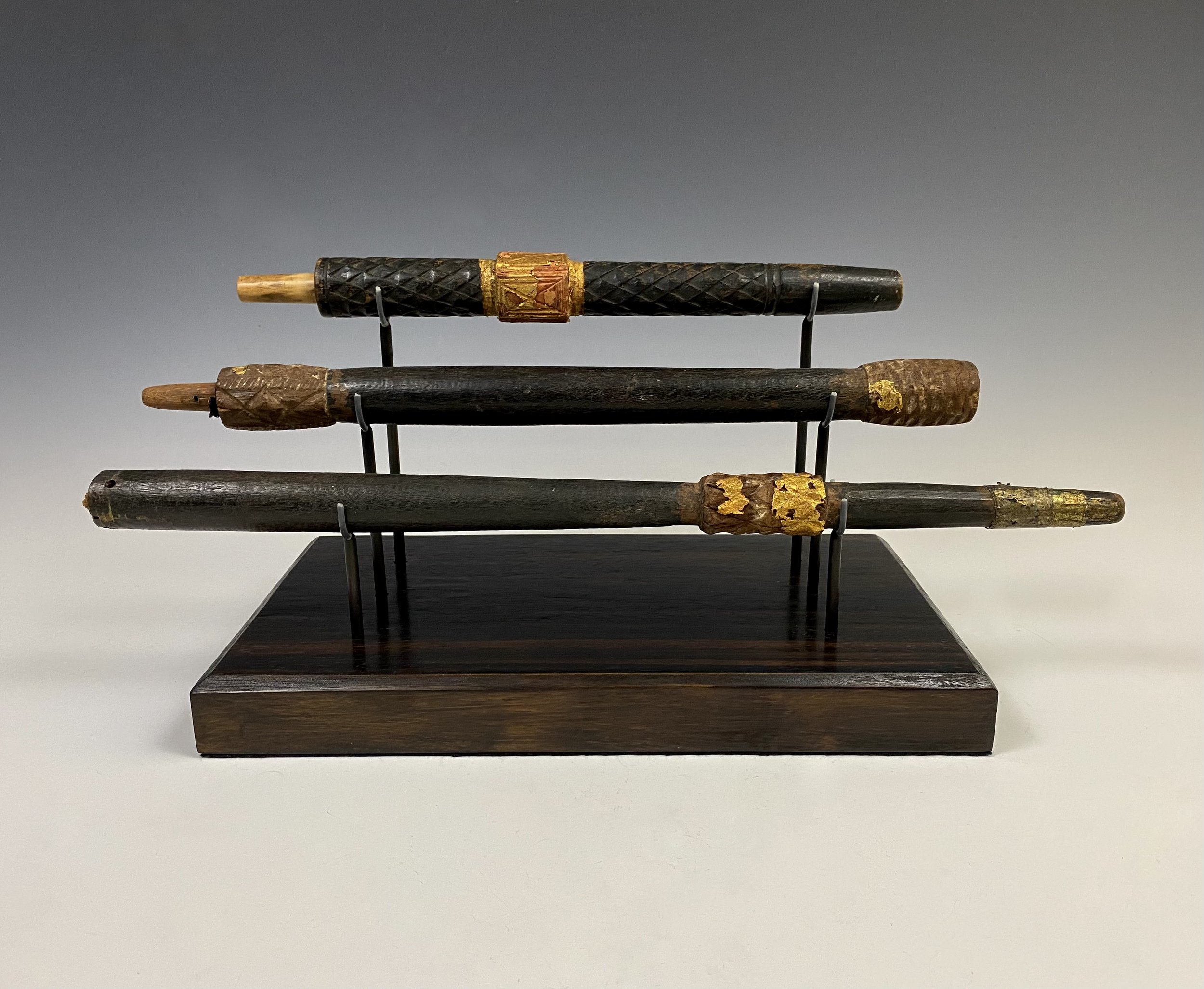
Asante linguist staff fragments. c.20th century. Material: wood, paint, Gold foil, silver foil. Additional notes: This Asante linguist staff would have been topped with a finial of wood and gold leaf with imagery representing an Asante proverb. Ex estate of Merton D. Simpson, New York, NY
